Bonus Material: 100 Ways To Increase Website Traffic
Traffic is everywhere! Today I’m going to show you 10 proven ways to increase your website traffic by 10,000 visitors in the next 30 days.
In fact, these are the exact same methods I used to increase traffic on my own website (after trying other methods and failing for over a year):
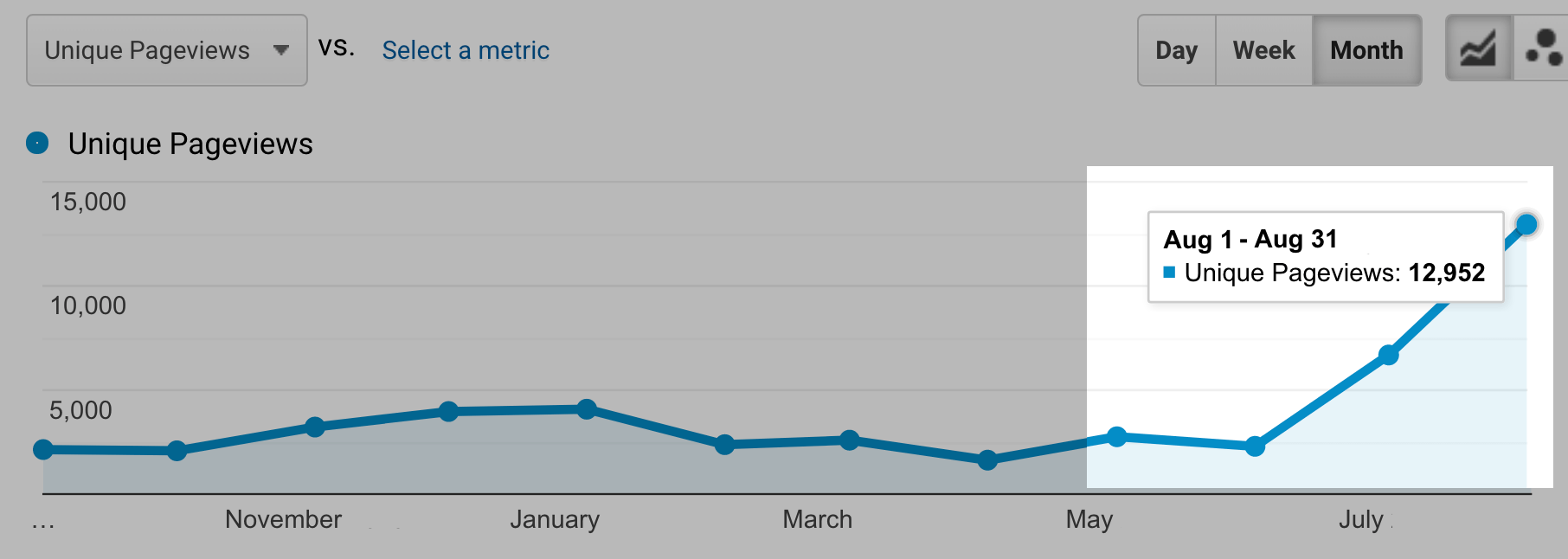
Grab my full list of 100 proven ways to increase your website traffic (with step-by-step instructions) and links to live examples below.
Then read on to learn my top 10 ways to increase your website traffic (7 out of 10 will drive free traffic to your website).
- Increase Your Traffic From Micro-Influencers
- Increase Your Traffic From Medium
- Increase Your Traffic From Quora
- Increase Your Traffic From LinkedIn
- Increase Your Traffic From Reddit
- Increase Your Traffic From YouTube
- Increase Your Traffic From Google
- Increase Your Traffic From Guest Emails
- Increase Your Traffic From Solo Ads
- Increase Your Traffic From Link Building
1. Micro-Influencers: Pay $75/Month To Get Your Content Shared 1,000X By Micro-Influencers
Platform: Quuu Promote (Facebook, Twitter, and LinkedIn).
Time: 10 minutes.
What You Do: Sign up for the Quuu Promote $75/month auto-promotion plan, and get all your latest content promoted across Quuu’s micro-influencer network.
How You Do It:
- Go to Quuu Promote and sign up for the Automatic $75 per month / per site plan.
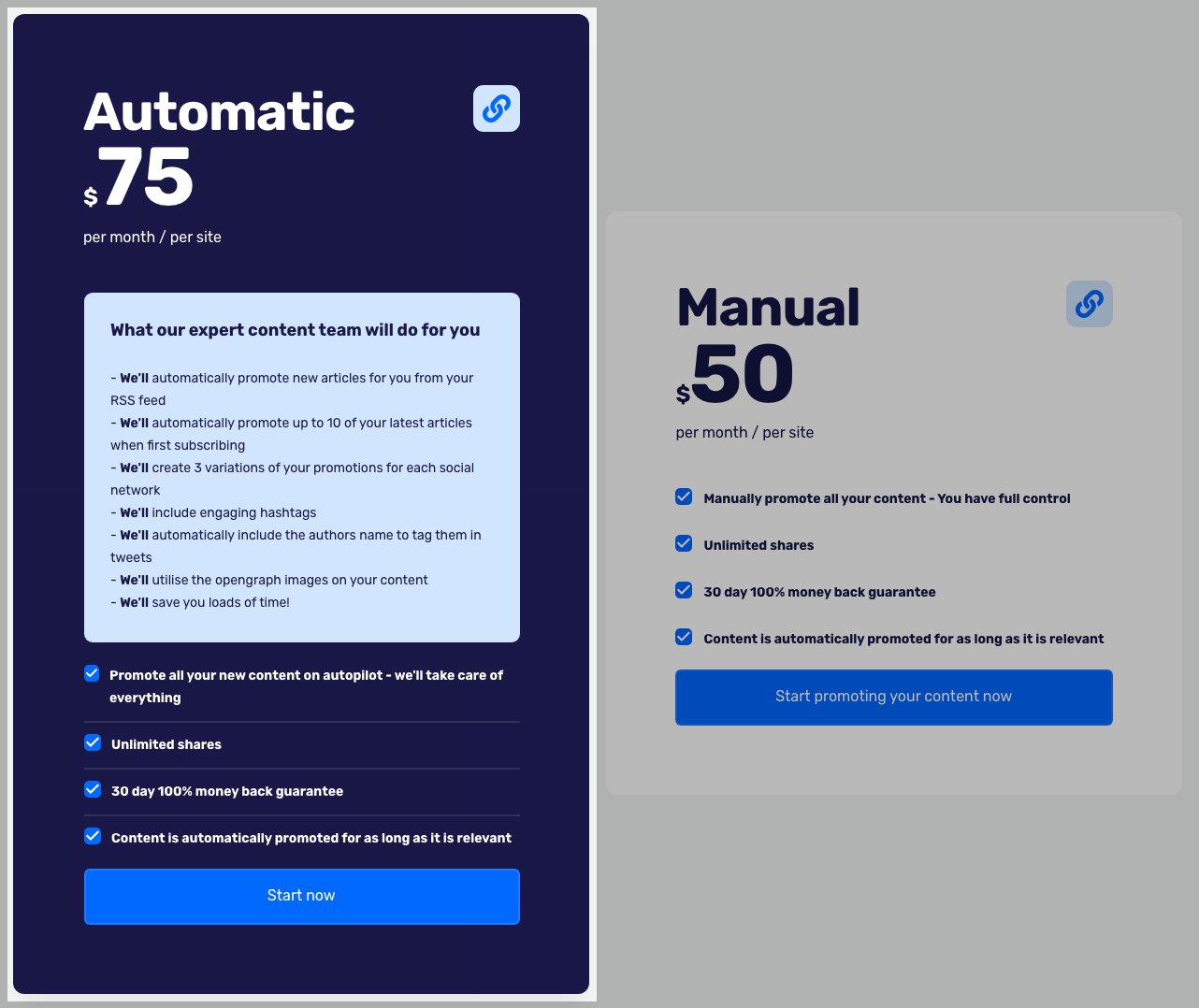
2. Add your blog’s RSS feed URL (Note: if you don’t have one or don’t know what it is, Quuu Promote’s team will help you get one set up).
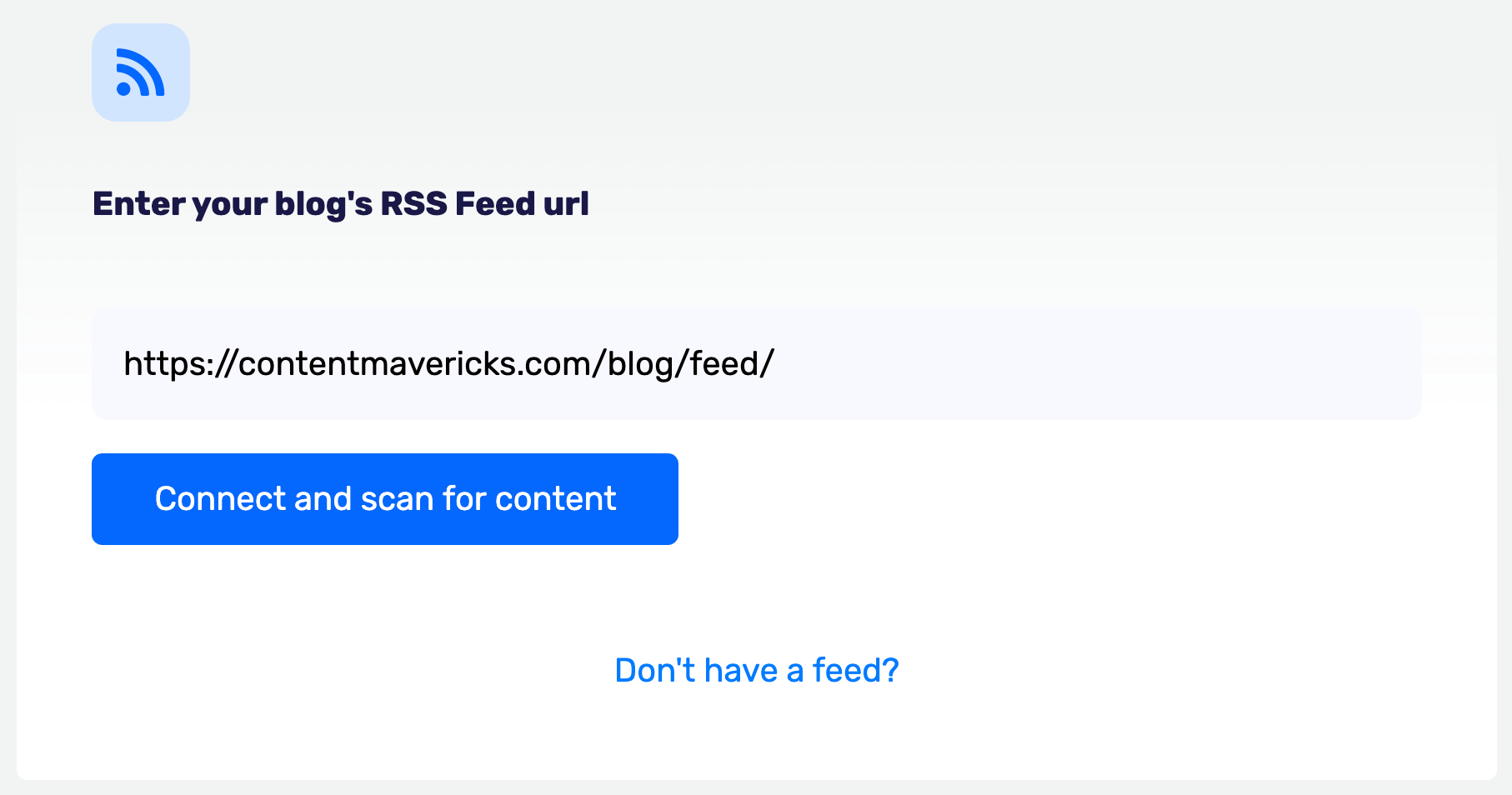
3. The Quuu Promote team will automatically promote new articles for you from your RSS feed across micro-influencers social media profiles.
Here are a few of mine with stats (within 60 days 1000+ shares and 1,000+ clicks to your content are possible):

Pro Tip: If you’re really hustlin’ for traffic, a cool little trick is to reply to the person who shared your post with a second piece of follow-up content (this way you get your content in front of their social media fans AND them).
How does Quuu Promote get 1,000s of people to share your content so cheaply?
- People sign-up to Quuu (a separate product to Quuu Promote) to get hand-reviewed content in specific categories posted to their social feed automatically without having to login to social media everyday.
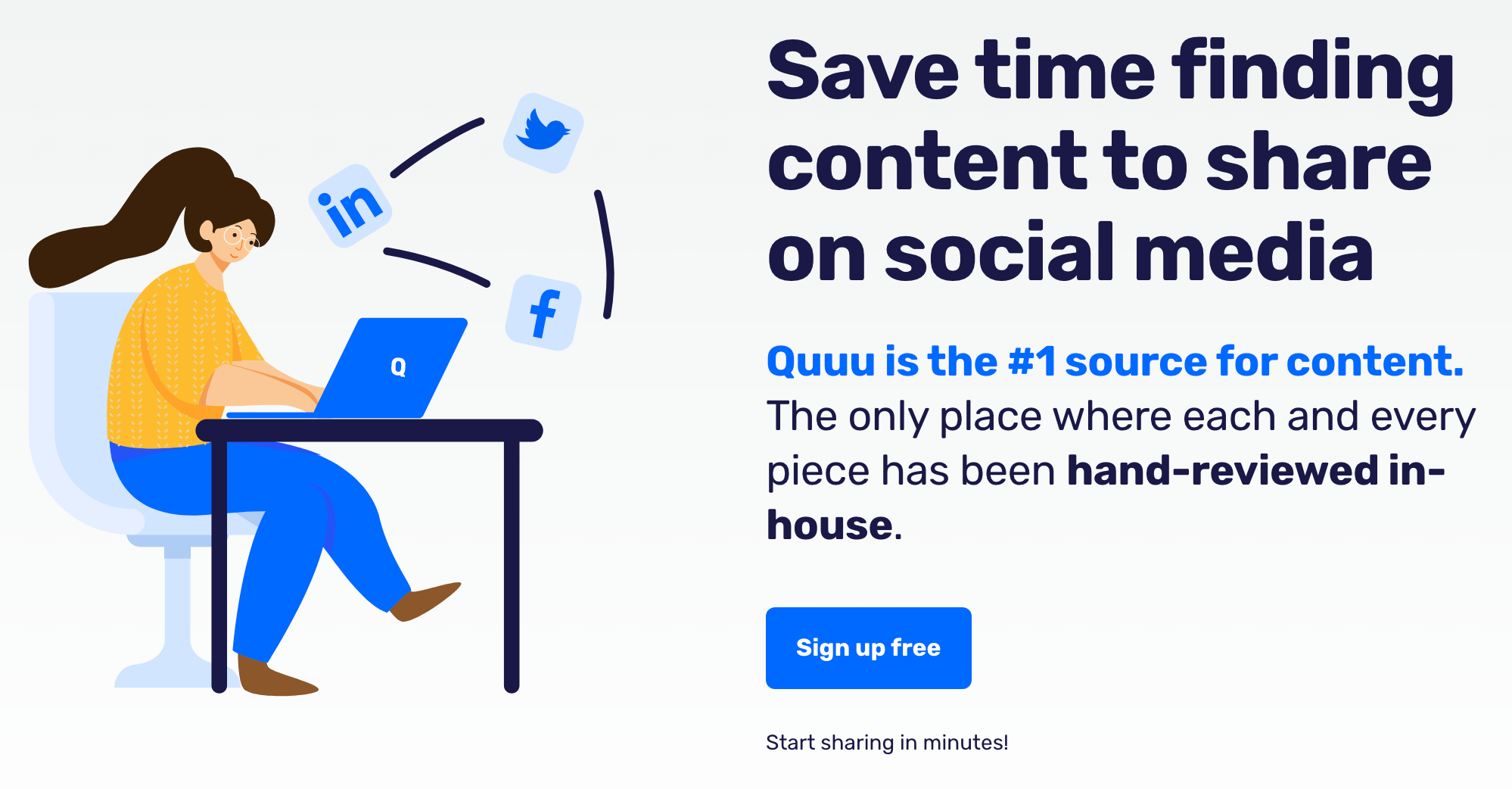
2. The Quuu team personally vet Quuu Promote customers' content in-house and categorize them into one of 500 categories (so only relevant, high quality content is being posted to Quuu customers' social media feeds.)
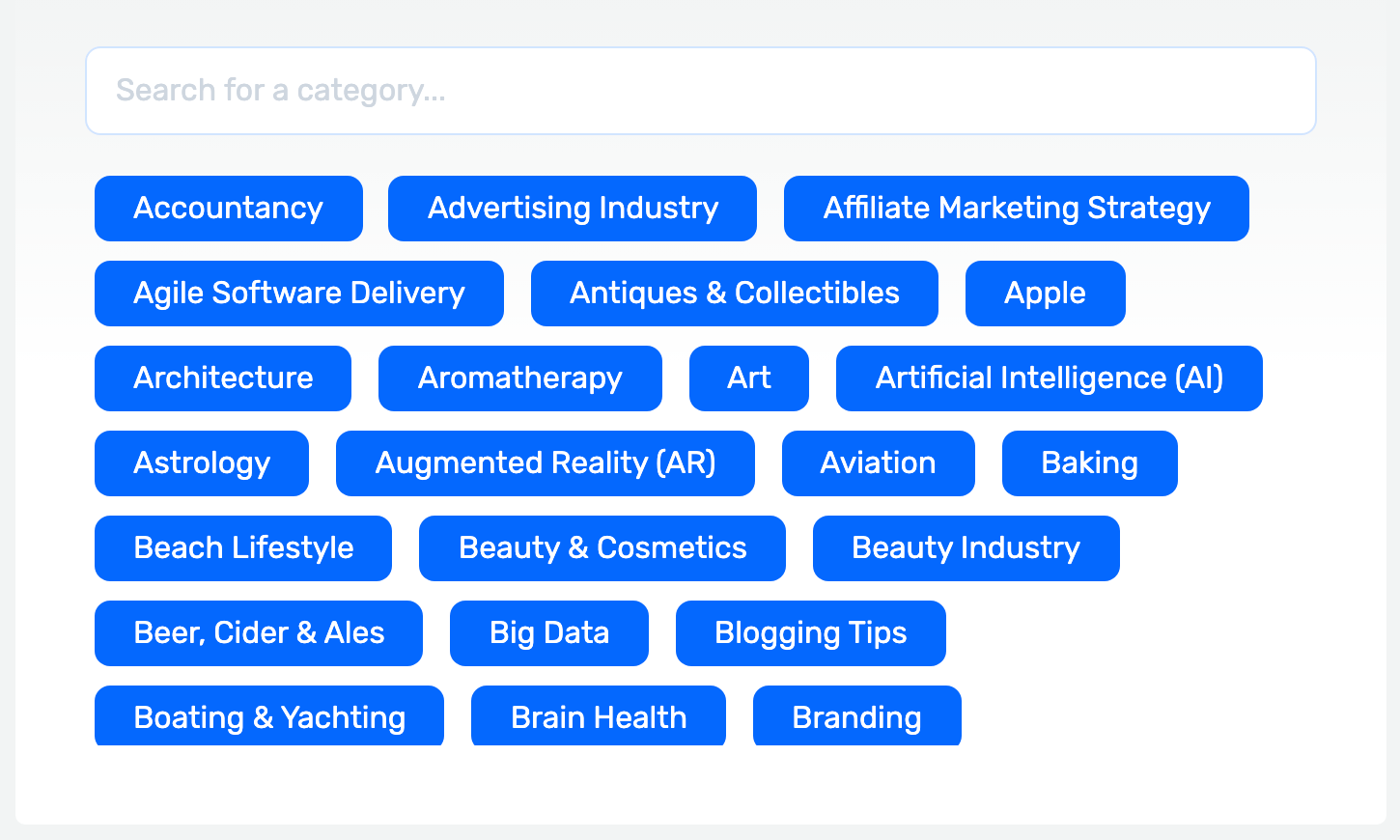
3. Quuu users (aka the “micro-influencers”) automatically get Quuu Promote customers' content promoted on their social media feeds.
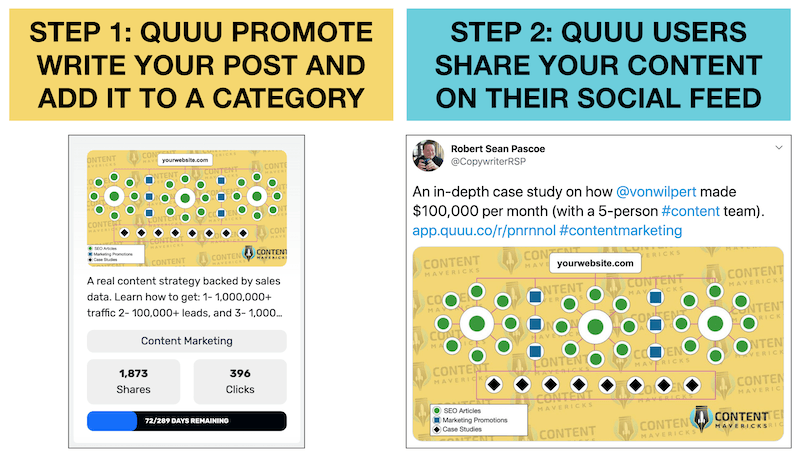
It’s pretty cool.
Give it a go and see how many clicks you get.
2. Medium: Import Your Content To Medium After 30 Days
Platform: Medium.com
Time: 10 minutes per Medium post.
What You Do: Import content from your website to Medium to get traffic from Medium readers (without any duplicate content penalties).
How You Do It:
- Post your content on your own site.
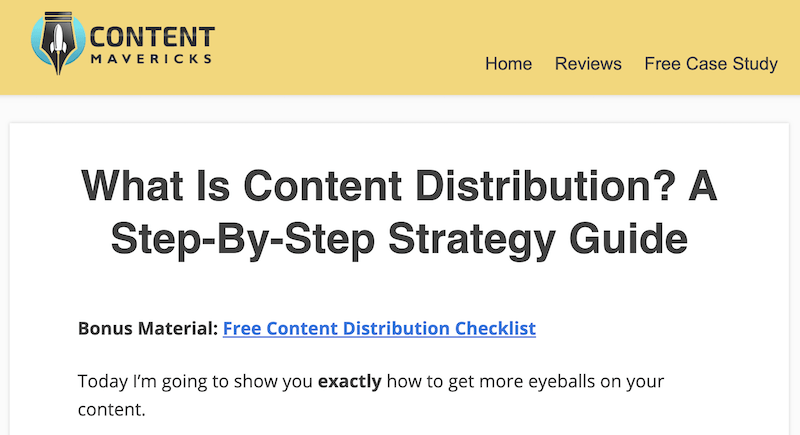
2. Go to Google Search Console > URL inspection > enter your URL > Request Indexing to index your content on Google.
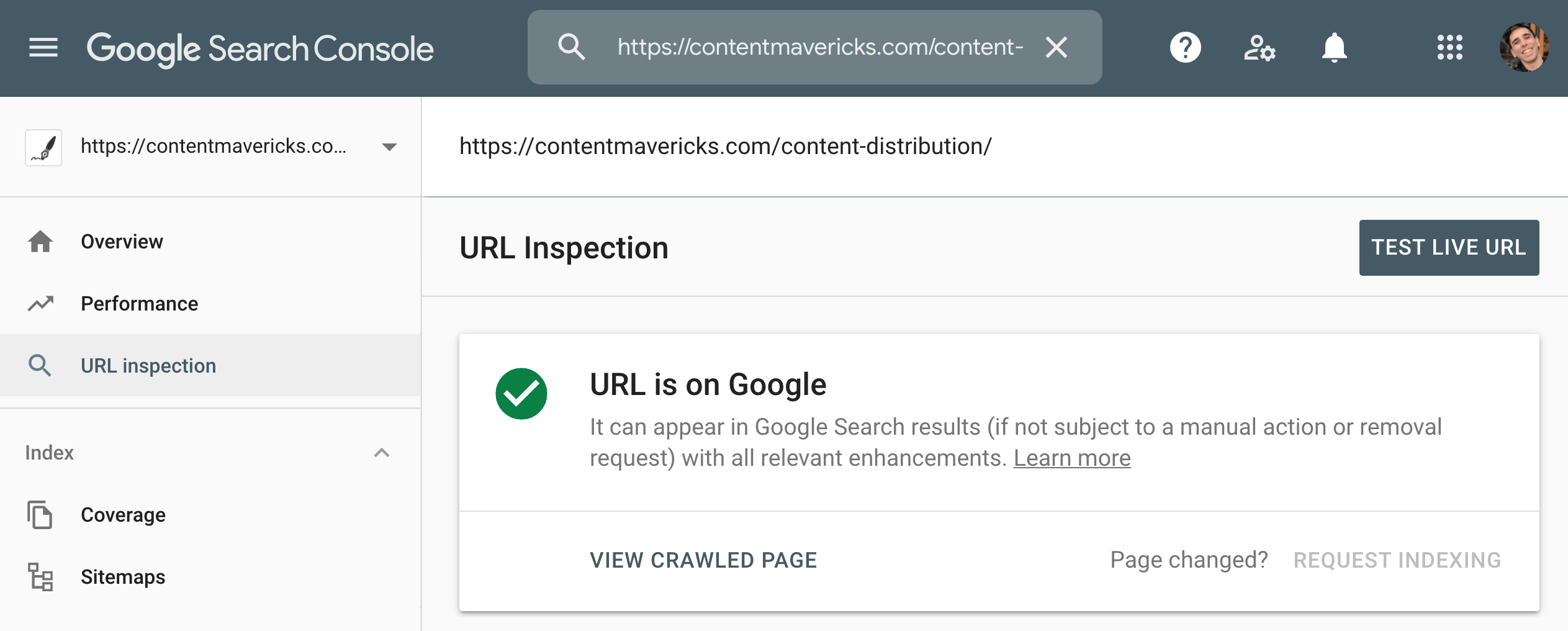
3. Wait 30 days (this gives Google time to index your content).
4. Import your content to Medium by clicking your profile picture in the top-right corner of the page > Stories > Import a story.

5. At the top of your story click on three dots (...) > Story settings > Advanced Settings > Under “Customize Canonical Link” enter the URL to the original content on your site.

6. Under Reader Interests, tag your Medium story with 5 relevant tags to take advantage of Medium’s in-built distribution.

Using this strategy with just five blog posts, we’ve driven over 10,000 new visitors to our content on Medium:

The kicker?
You own the original source of the content (not Medium).
So you're building your brand and platform first.
Then you're skimming traffic off the top of Medium by using their in-built distribution to get more eyeballs on your content.
This is a strategic way of syndicating your content (with no worry of the SEO issues).
3. Quora: Answer Questions Ranking 1-10 On Google
Platform: Quora.com
Time: 30 minutes per Quora answer.
What You Do: Answer Quora questions on topics related to your business that rank 1-10 on Google AND have over 100 monthly search volume.
How You Do It:
- Go to SEMrush > Organic Research > Search for quora.com.

2. Go to the “Positions” tab > Under “Filter by keyword” enter the topic of your post (e.g. tony robbins) > Under “Volume” enter 100-100,000.

3. Scroll down to the Organic Search Positions section and sort by the “Position” column to see all the Quora answers on page one of Google for the topic (that get >100 search volume per month).
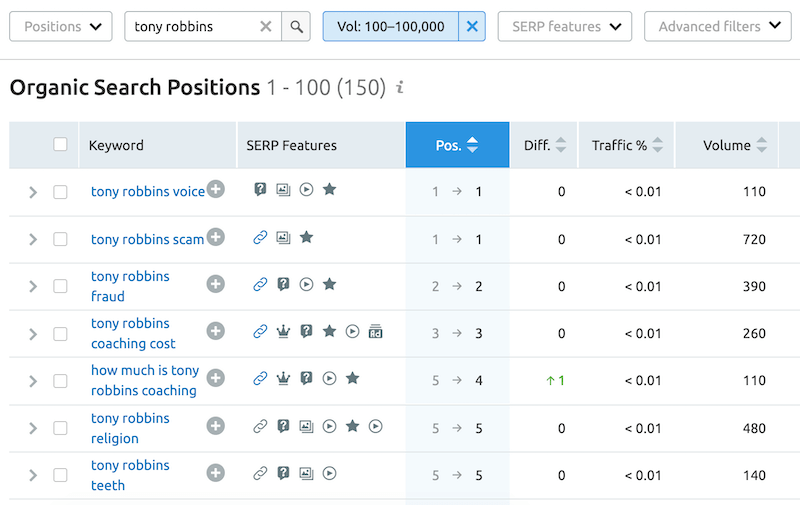
4. Provide the best answer to the question. To do it:
- Write a unique, well-thought out answer.

- Use text and images (and video if you have it) to explain your answer clearly.
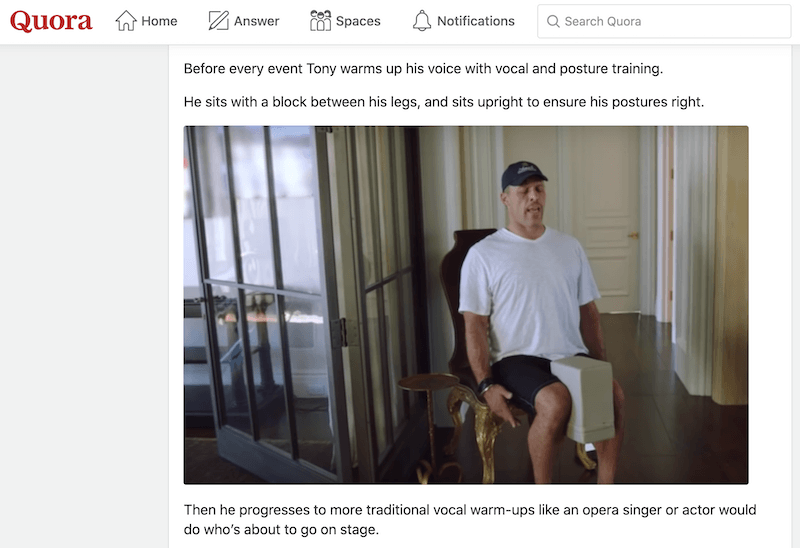
- Link to your website or a piece of content on your website related to the topic for people who want to go more in-depth into your answer.

Typically, 10% of people who view your Quora answer will visit your website (for example, the above answer has 15,000 views and ~1,500 website traffic).
With this strategy you can stop wasting time answering random Quora questions, and only answer the highest traffic potential ones related to your business.
Answer 10-20 Quora questions and you can drive 10,000 new visitors to your website every month, passively.
Note: SEMrush is a paid tool, but they gave me a 14-day free trial for Content Mavericks readers. Perfect to find 10-20 Quora questions you can answer.
4. LinkedIn: Ask People To Guess Something In Your Content
Platform: LinkedIn.com
Time: 30 minutes per LinkedIn post.
What You Do: Make a post on LinkedIn asking people to guess something in your content (or on your website), then send them the answer.
How You Do It:
- Make a post on LinkedIn asking people to guess something in a blog post, video or podcast you created.
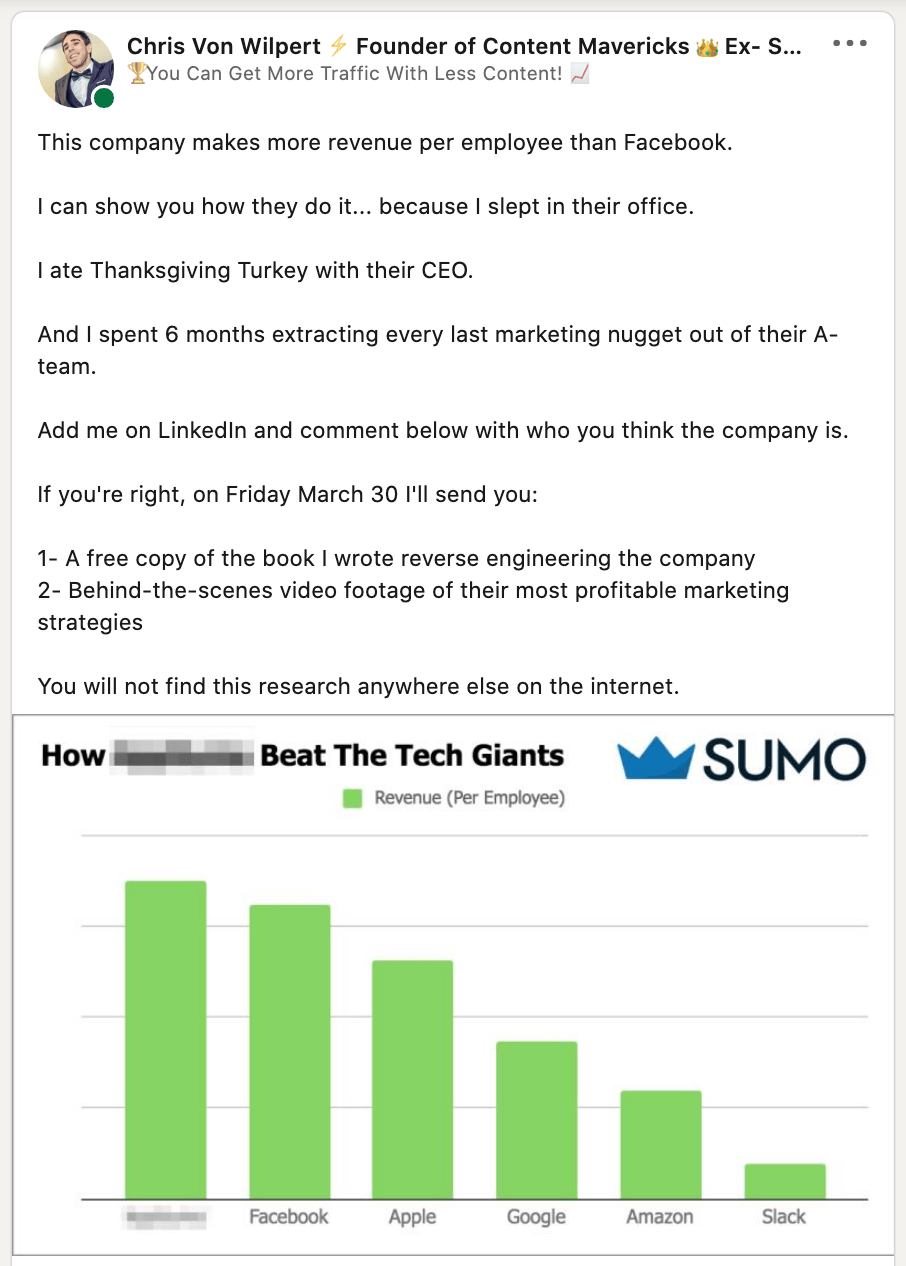
2. Within the first hour of publishing the post, send an email to your email list (or private message a handful of friends) asking them to guess the answer so the LinkedIn algorithm shows your post to more people.
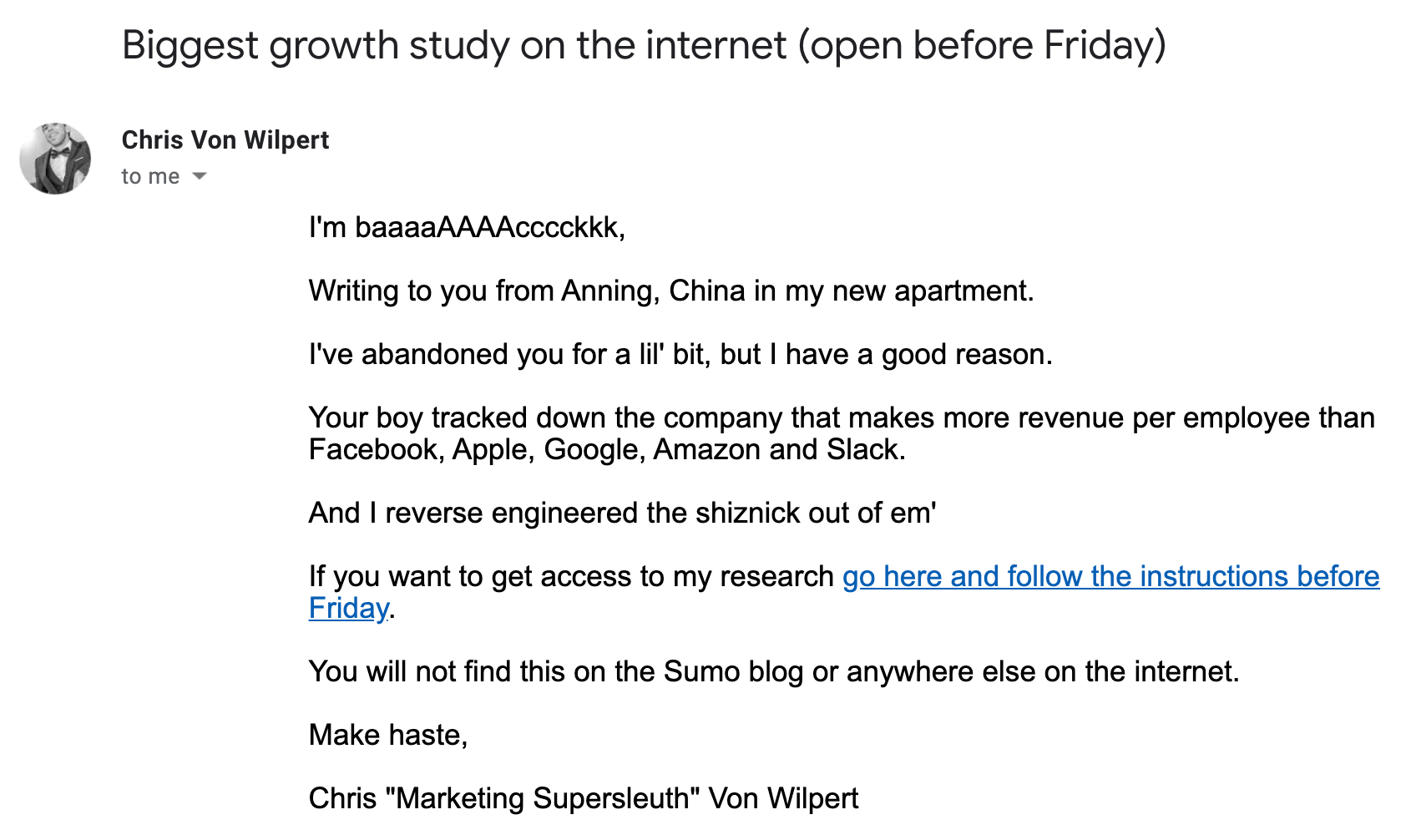
3. Private message everyone who guesses with a link to your content.
For people who answer right, send a message like this:

For people who answer wrong, send a message like this:

Note: If you don’t want to private message people, you can make a seperate post linking to your piece of content and tag everyone who commented.
Here’s an example where I used this strategy to connect with 220 new people:
From what I've seen:
All you need is a handful of comments in the first 1-2 hours to get your LinkedIn post to start "trending."
That’s when LinkedIn starts showing your post to all your 1st degree, 2nd degree, and 3rd degree connections so you can connect with new people.
5. Reddit: Post About Your “Boring Findings”
Platform: Reddit.com
Time: 30 minutes per Reddit post.
What You Do: Make a post in a relevant subreddit for your business about three major findings on a topic (with a link to your full findings).
How You Do It:
- Create an actionable blog post, video or podcast. (here is an example)

2. Post a summary of the three major findings. (here is an example)

3. Put a soft call to action at the end for people to check out the full findings on your website.
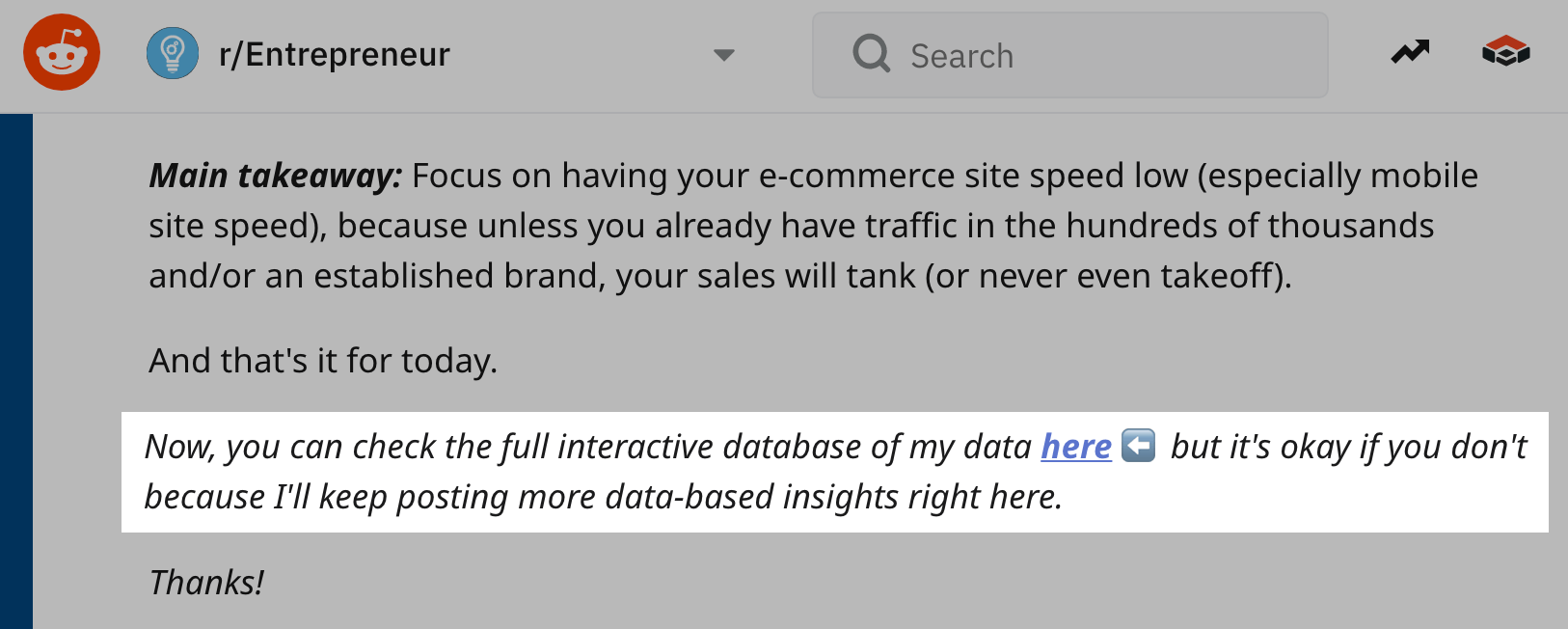
Louis Vieira followed this strategy and got 1.6k upvotes on Reddit in r/Entrepreneur (a subreddit with over 800k members that gets 100s of posts a day).
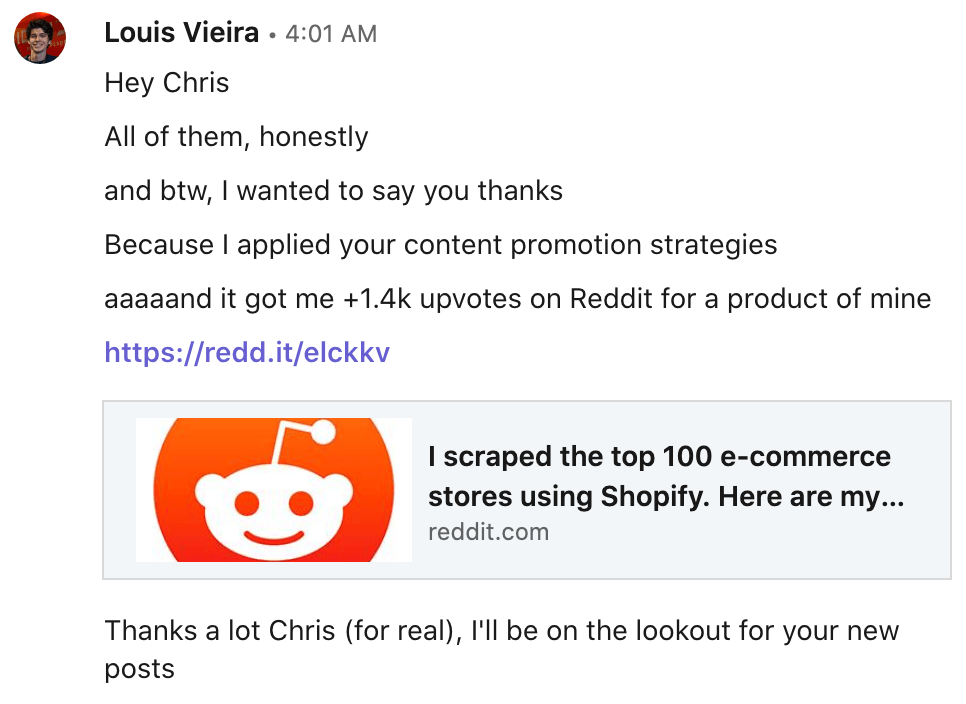
People even suggested in the comments he cross-post it in other subreddits:

Louis’ Reddit post completely flew under the radar of Reddit admins and trolls because Louis wrote about his “boring findings” with links to supporting images (i.e. he didn’t directly self-promote his website).
Note: This same strategy works in Facebook Groups, Slack Groups, forums, and anywhere else online where there are communities of people.
6. YouTube: Rank A Video On A Popular Topic In 24 Hours
Platform: YouTube.com
Time: 5 hours per YouTube video.
What You Do: Turn a popular blog post into a popular YouTube video and get 1,000 views in 24 hours to get it ranking in the top #3.
How You Do It:
- Go to SEMrush > Organic Research > Pages and plug in your competitor's URL to find their most popular content (or do it for your own site).
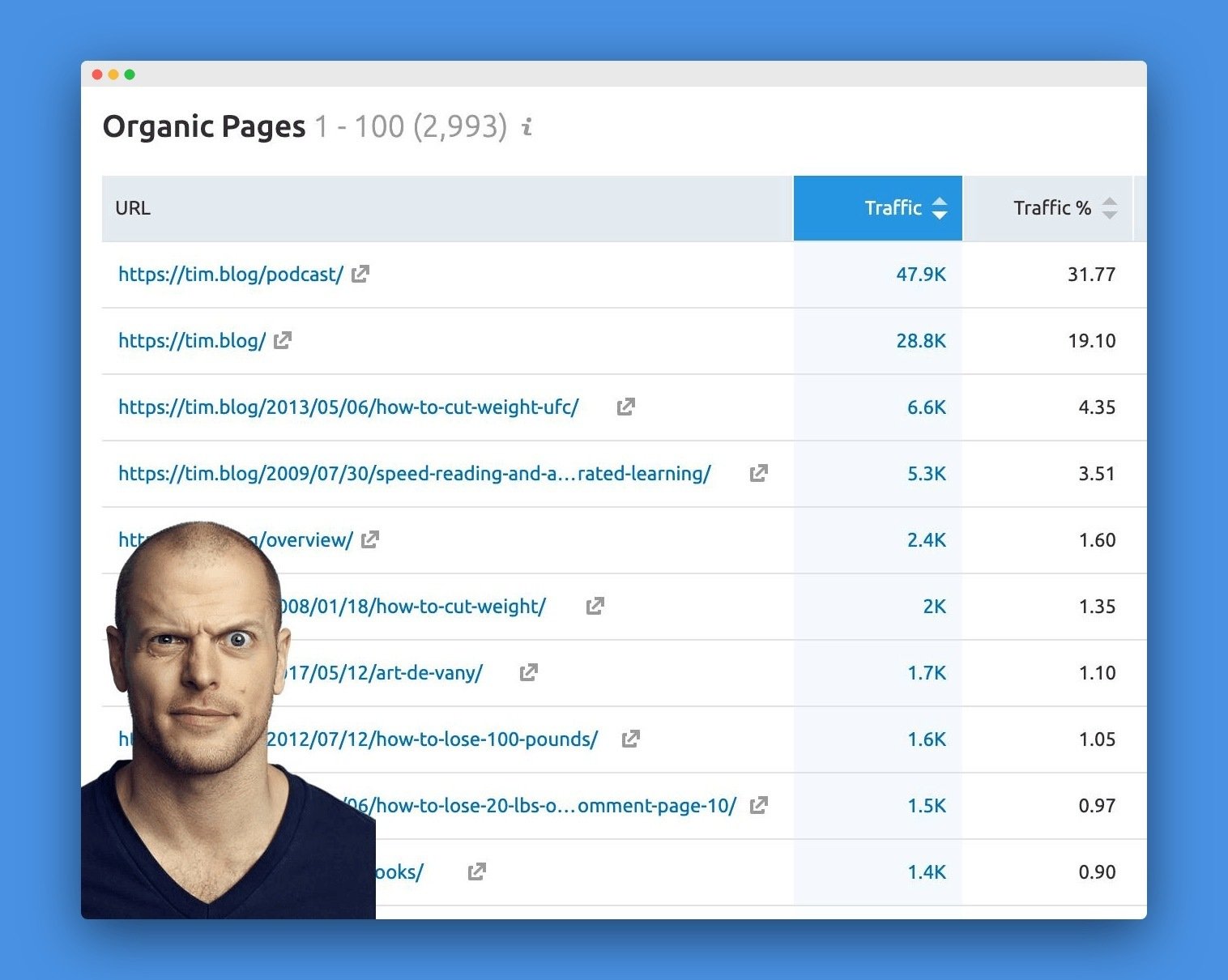
2. Search on YouTube for the most popular topics (e.g. in the example above I might search for “how to cut weight” and “how to lose 100 pounds”). Find a topic where the top two videos have 10K or more views.
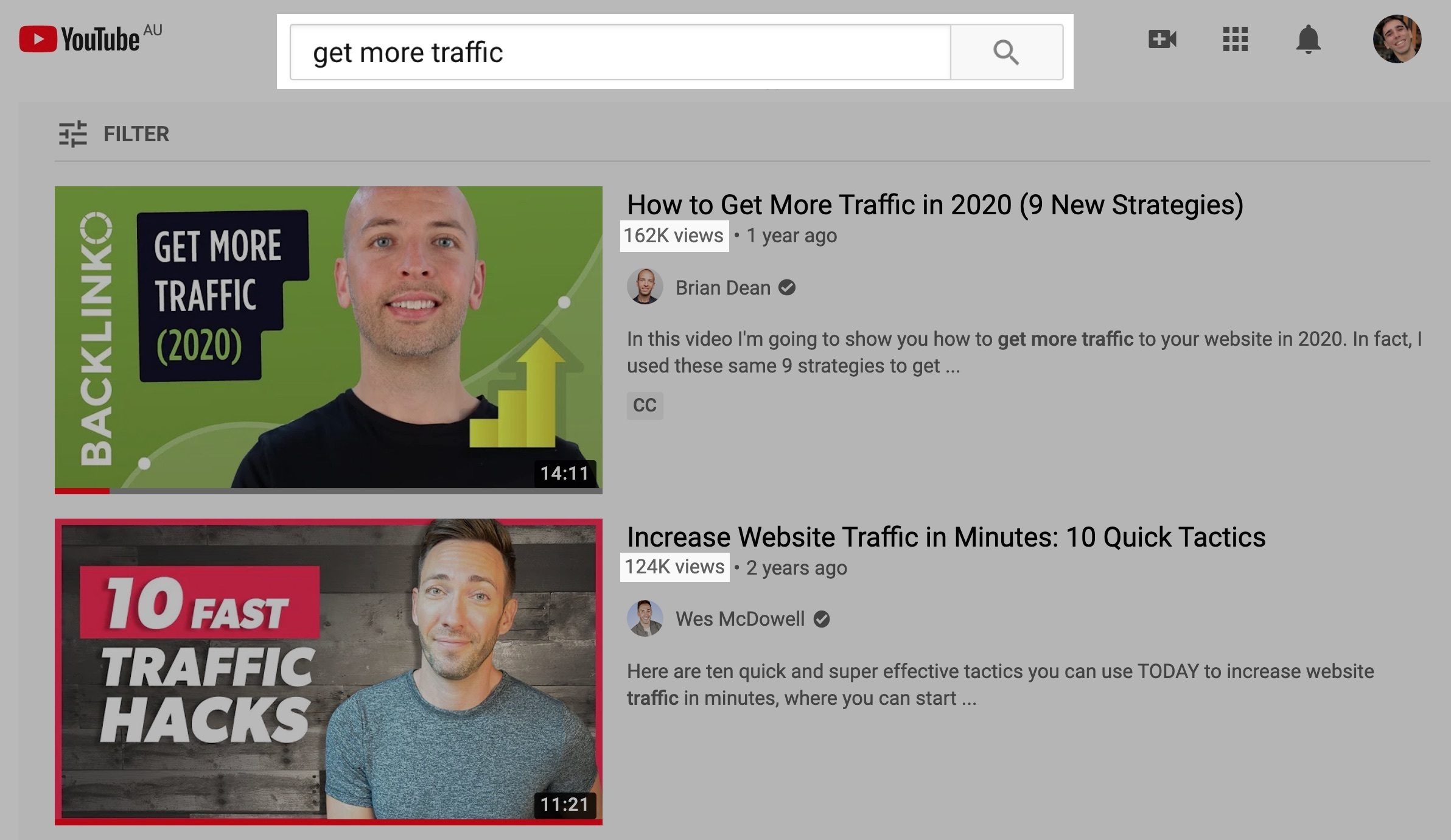
3. Make a talking head video covering the topic. Here’s a great example of a talking head video (with 10 top tips on how to make one):

4. Edit the talking head video to hold your audience's attention, with transitions for:
- Zooming
- Jumpcuts
- Text/Images
This is critical if you want to rank on YouTube, because YouTube favors videos that keep viewers on their platform longer.
Javier explains how do edit your video to increase audience retention (like popular YouTubers pewdiepie, Logan Paul, and Casey Neistat):

If you’re a content creator or business owner, editing video isn't the best use of your time. I recommend you outsource this to someone like Video Husky.
5. Make a thumbnail that stands out against the other popular videos (e.g. an orange thumbnail will stand out against thumbnails in green, red and white).

6. Front-load the title with the keyword first, then at the end use parentheses with a specific result the video will show.

7. For the tags, find the three most popular videos (by view count) on the topic. Right-click on each video page and go to View Page Source. Do a CTRL+F search for keywords to find what tags they use and copy them.

Make sure your first tag matches the keyword exactly. For the other tags, use ones you found from the most popular videos.
8. Send an email to your email list to promote the video (or cut one minute clips from the video and post them across your social media with a link to the full video in the comments).
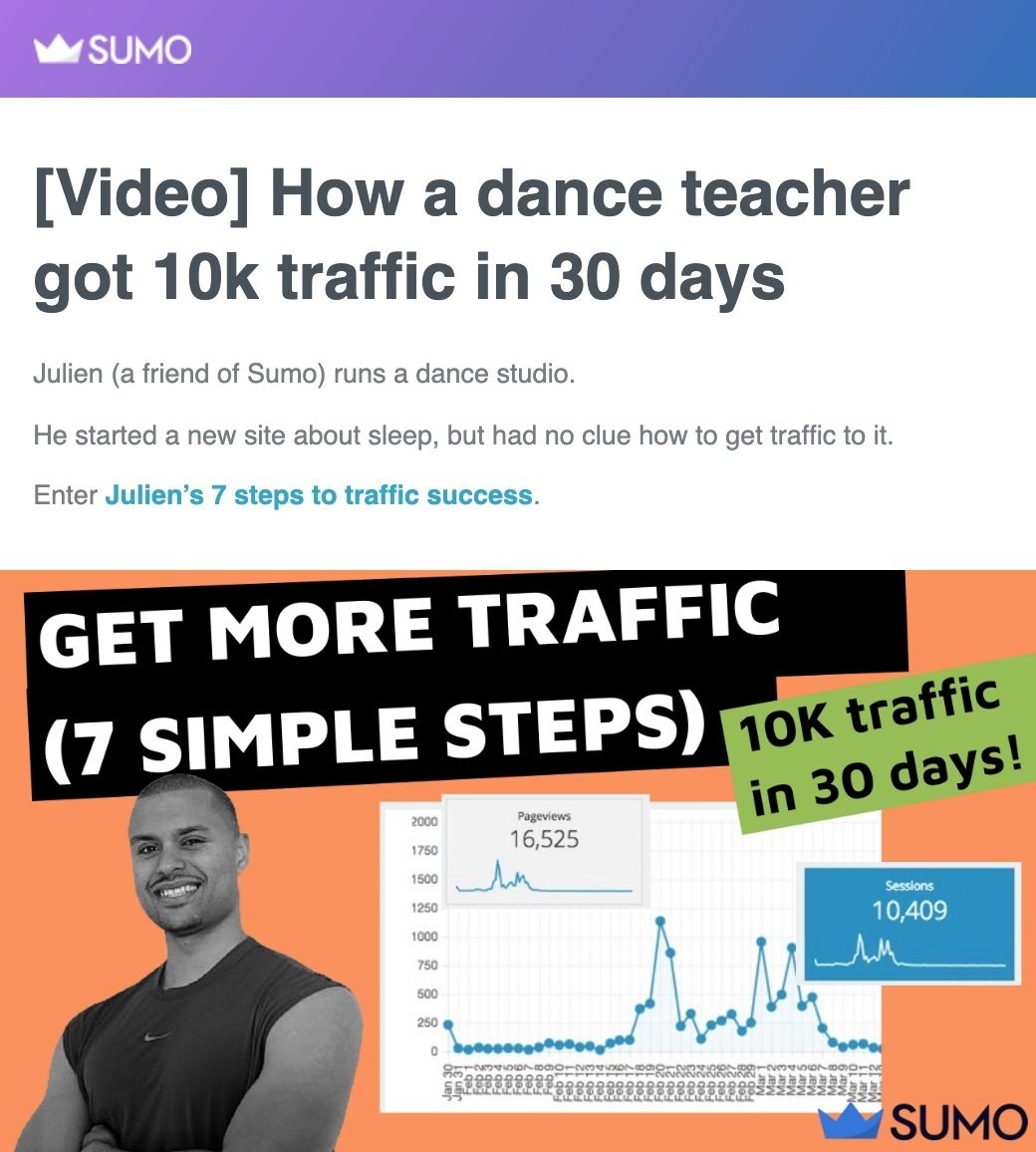
Typically you will see 90% of the clicks to the video come from email and 10% from social media.
If you can get 500-1,000 people to view the video in the first 48 hours, it’s possible to get your new video to rocket to the top of YouTube search, like this:
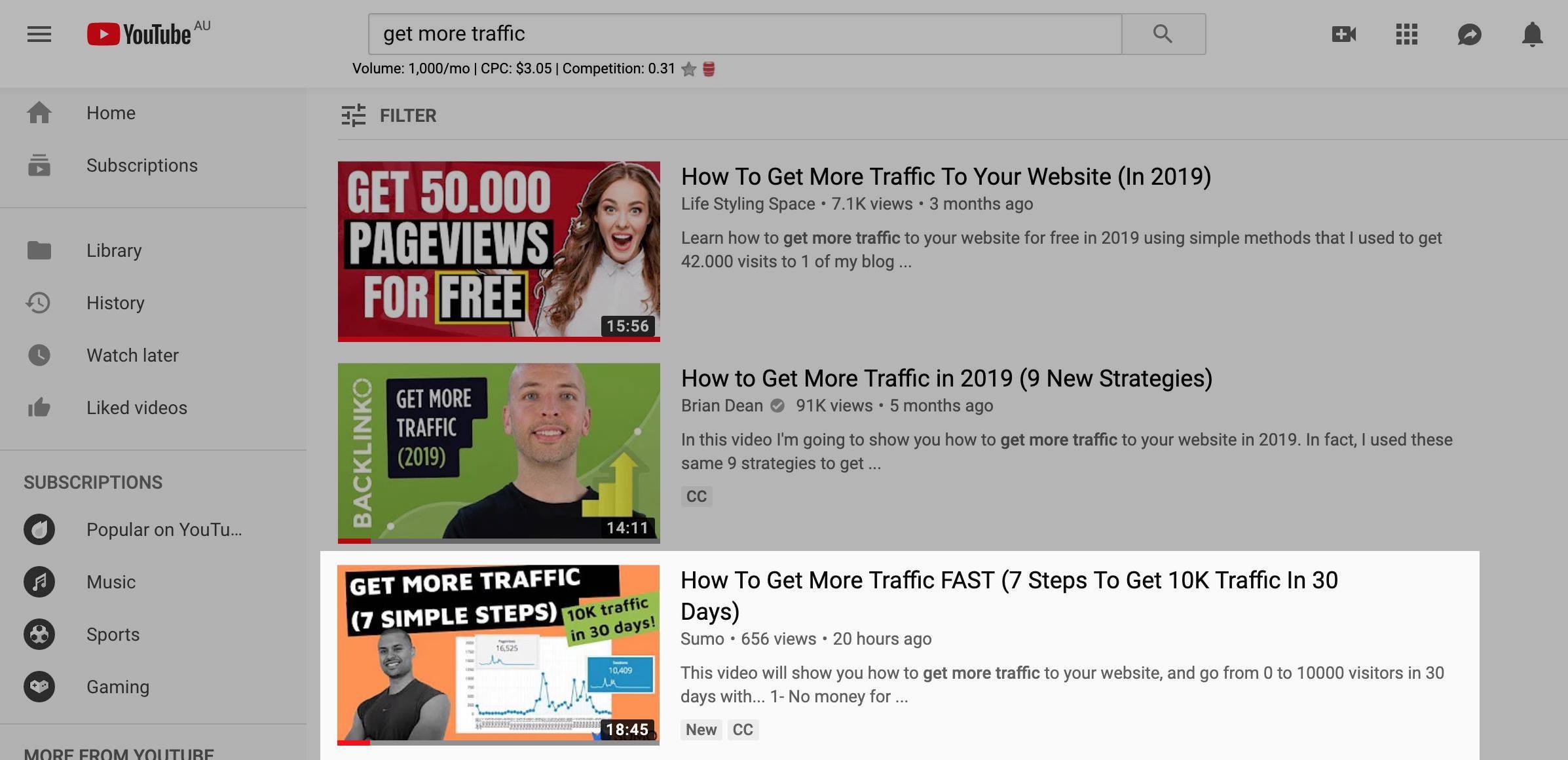
If your video is good enough to hold people's attention and keep them on YouTube (longer than other videos on the same topic), YouTube will reward you by ranking your video at the top long-term.
Pro Tip: Email the website owners ranking on page one of Google for the topic and let them know you have a YouTube video on the same topic. Tell them that embedding it on their page could increase their time on page to rank higher.
Note: SEMrush is a paid tool, but they gave me a 14-day free trial for Content Mavericks readers. Perfect to find your competitors most popular content.
7. Google: Double Your Organic Traffic With 80/20 SEO
Platform: Google.com
Time: 20 hours per blog post.
What You Do: Find the top 20% of content on your site contributing 80% of the organic traffic, then find 10 different (but similar) content topics to the top 20%.
How You Do It:
- Go to your Google Analytics > Behavior > Site Content > Landing Pages report.
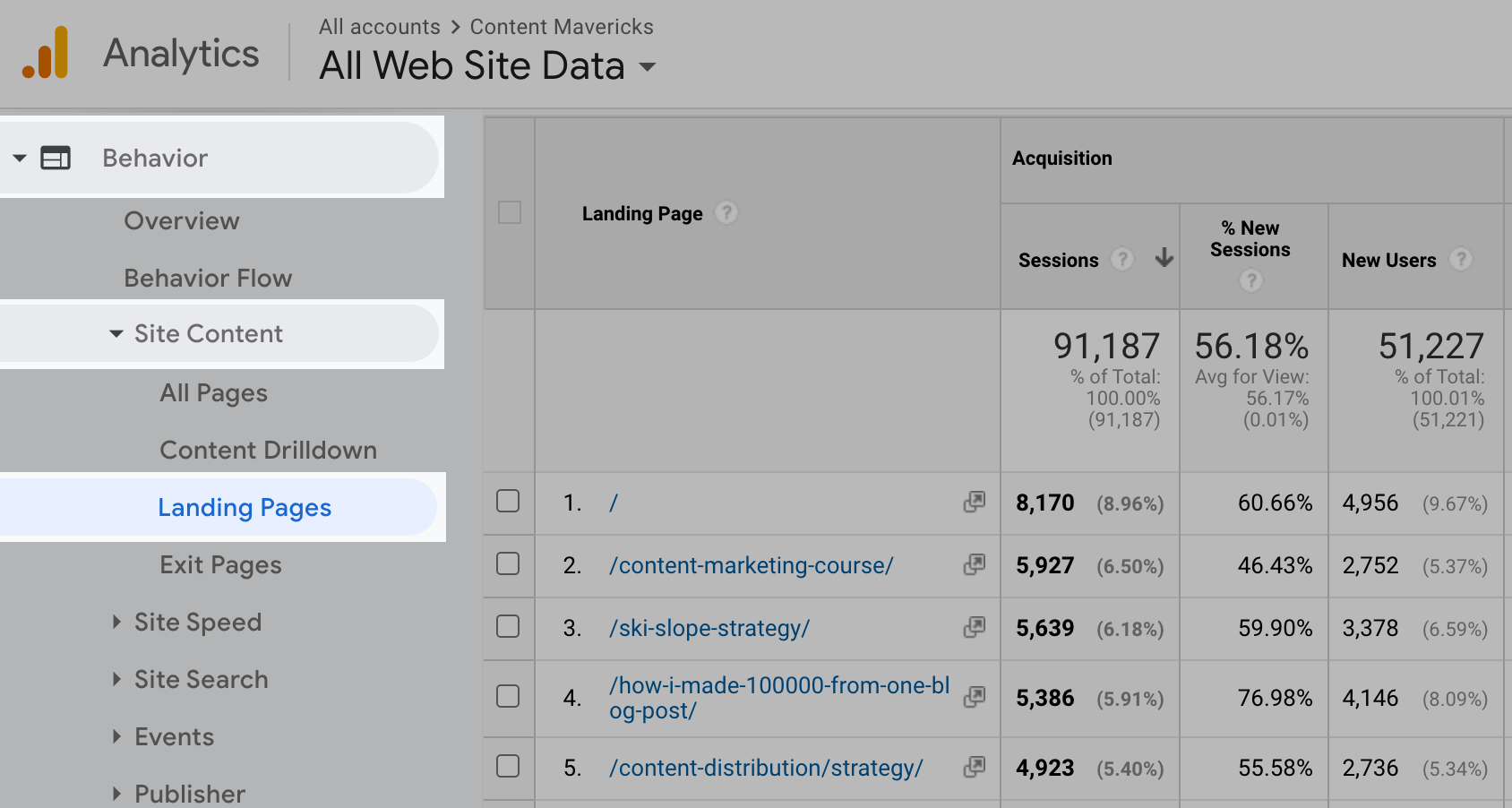
2. Change the default All Users segment to Organic Traffic, and toggle the date range to cover the last year.
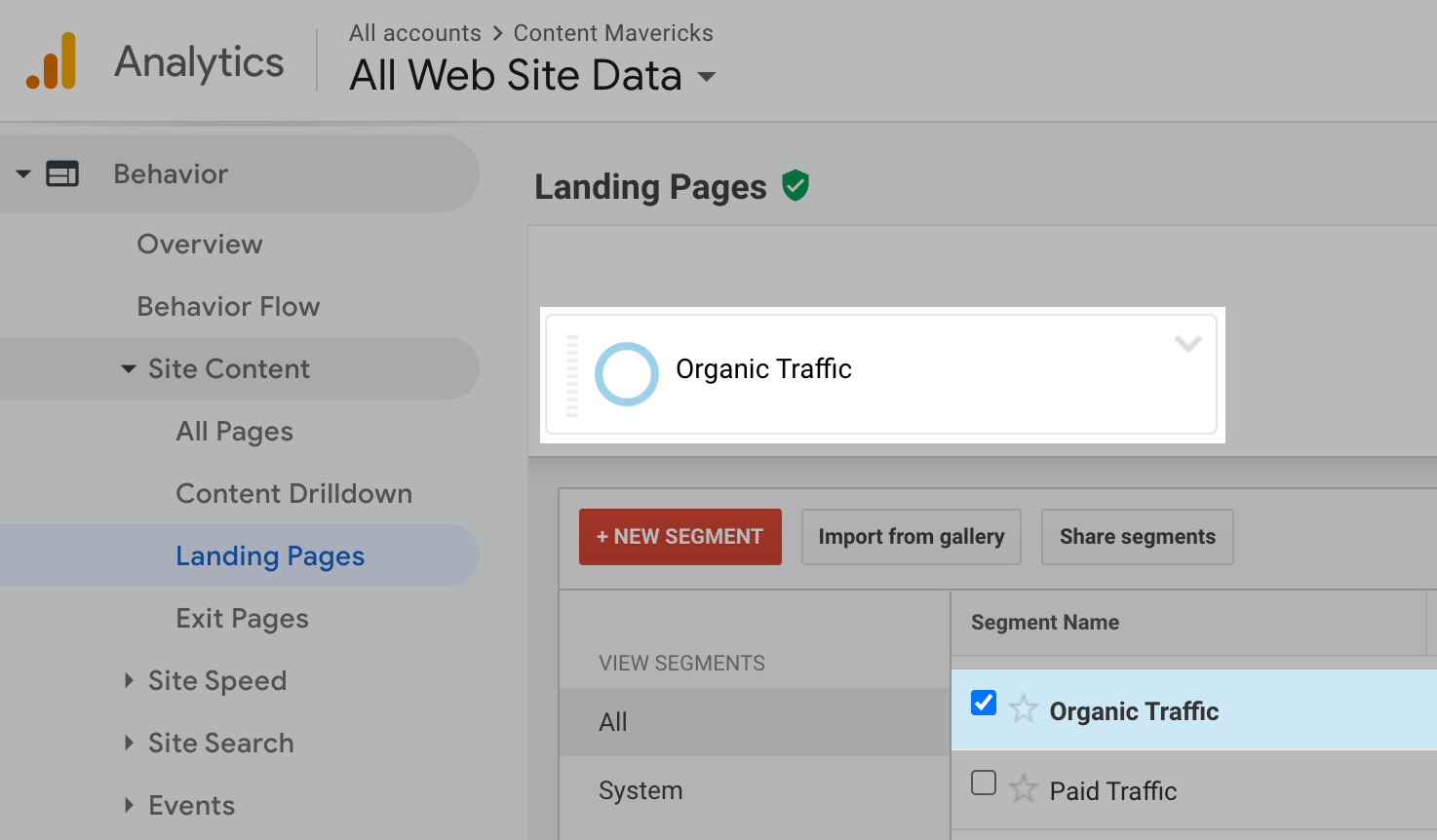
3. Scroll to the bottom of the report and change Show rows: to 500, then scroll up and click on Export > Google Sheets.

4. Remove every column and row except for Landing Page and Sessions. Now you're looking at all your content ranked by the most sessions over the last year.
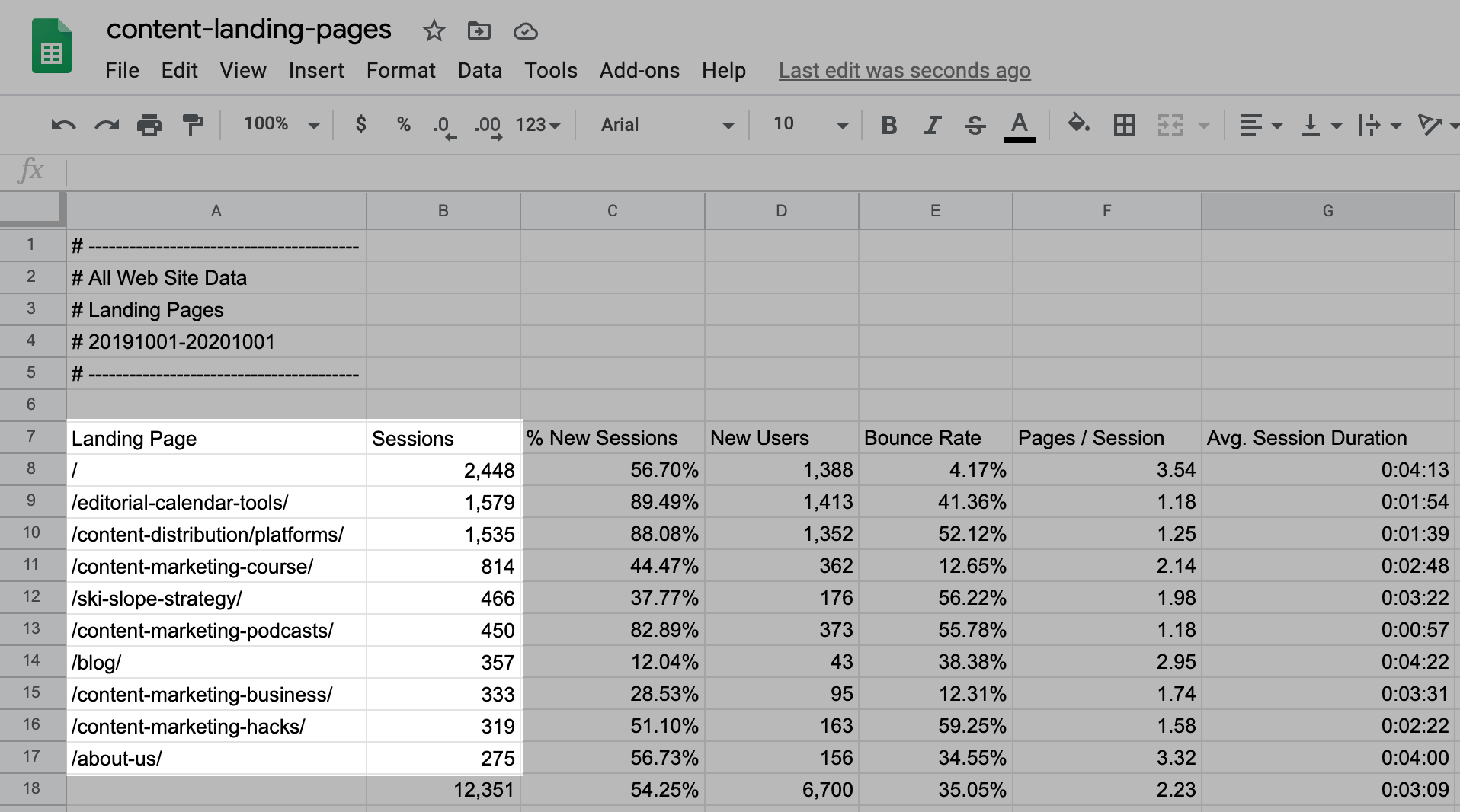
5. Add a SUM function at the bottom of your Sessions column to add up the total sessions for all your content.
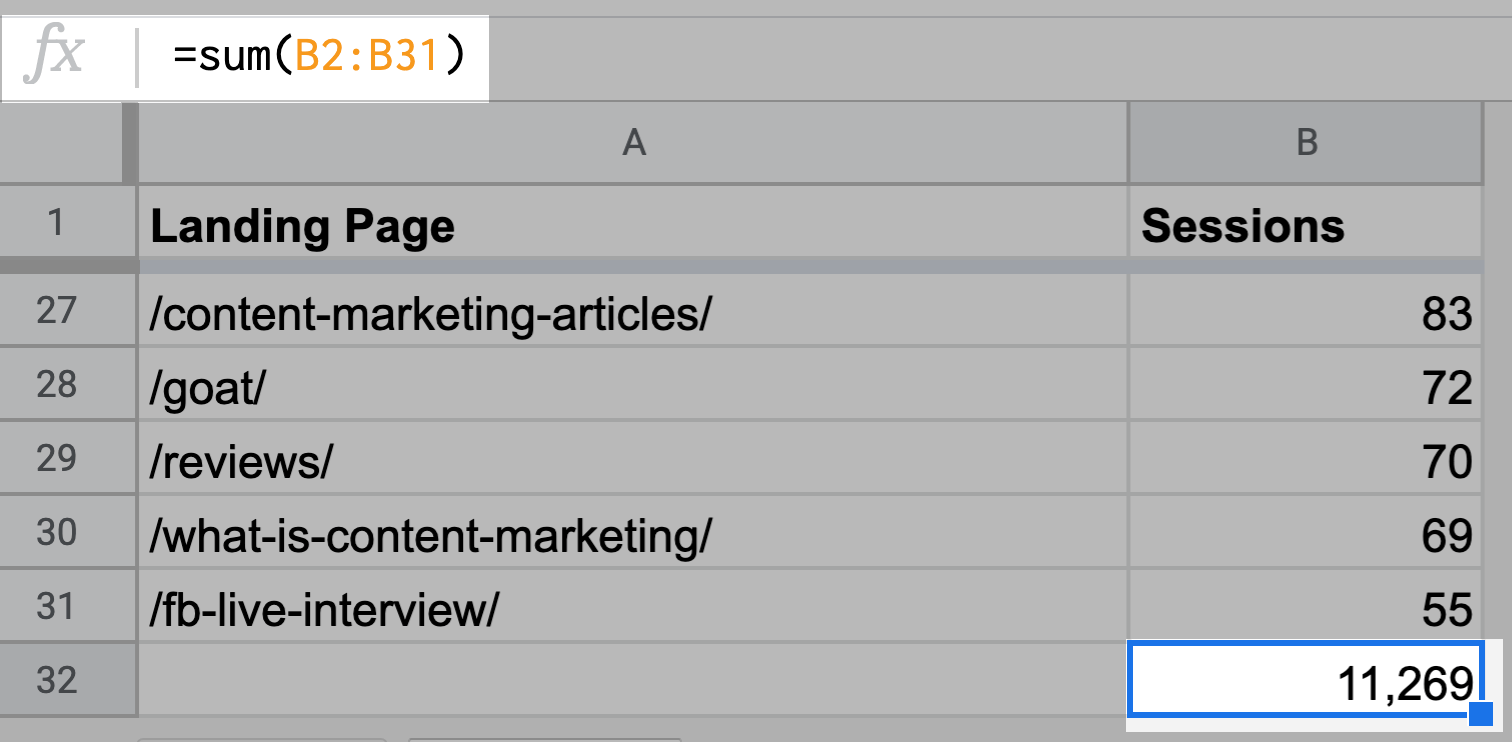
6. Add a third column for Percentage. Then use the formula: Sessions divided by Total Sessions for every page. This will show you the percentage of organic traffic each page is contributing to your site.
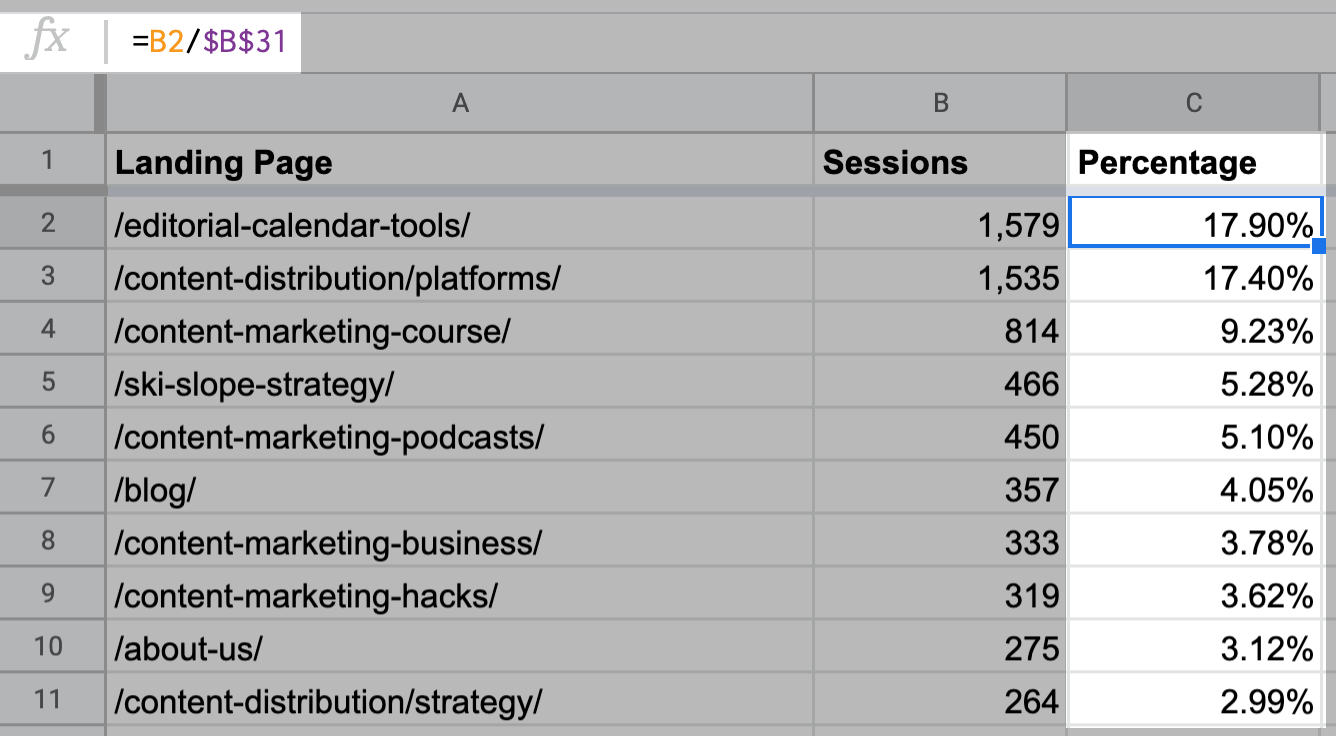
7. Add a forth column for Cumulative Percentage. The first row will equal the percentage of the first row. The second row will be the percentage of the first row + the percentage of the second row. The third row will be the percentage of the second row + the percentage of the third row, and so on.
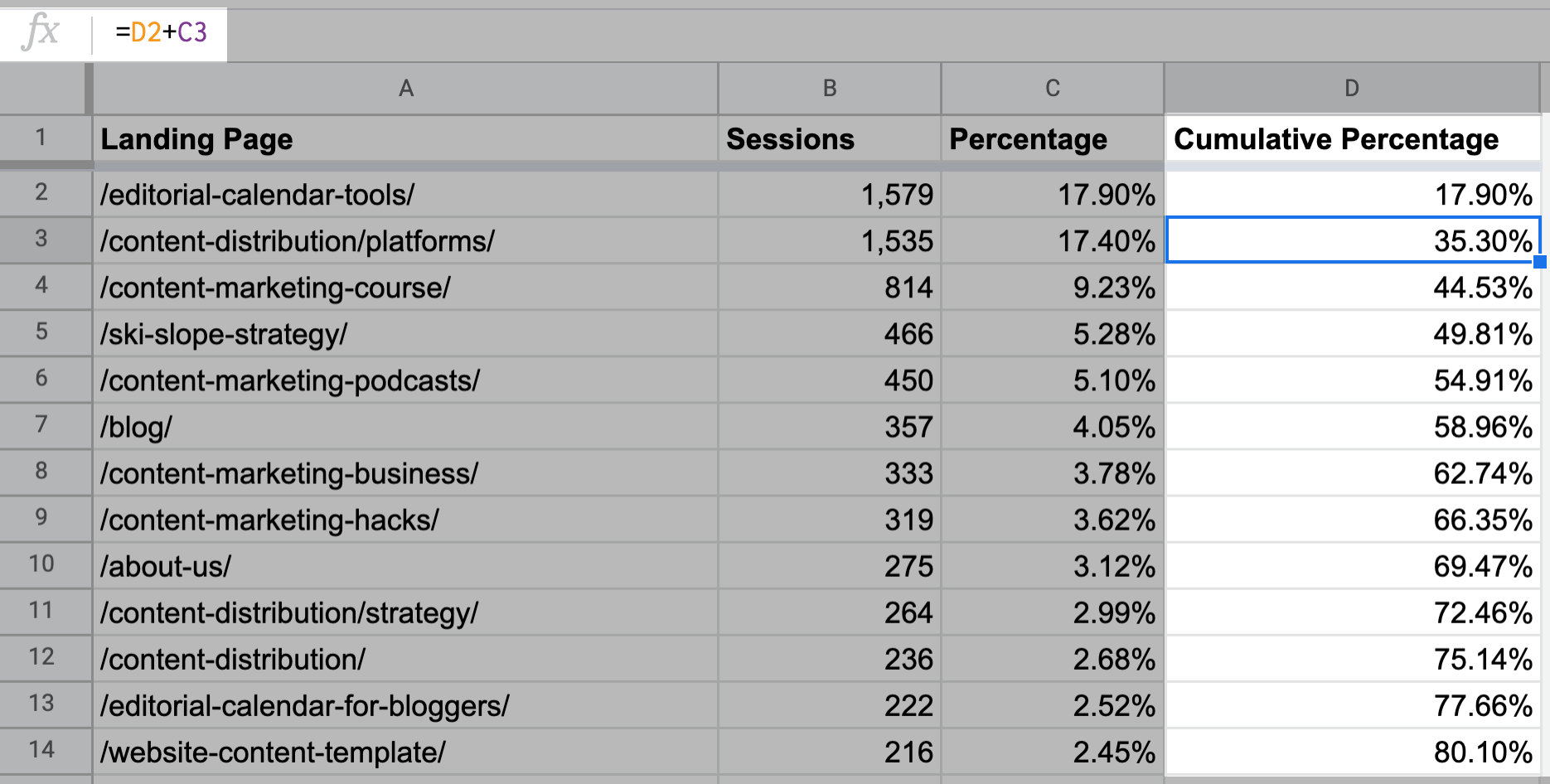
You'll now be able to see the 20% of content on your site contributing 80% of the organic traffic.
What do you do now?
8. Identify what broad category every piece of content in your top 20% falls under. You're looking for a pattern to see what your site has topical authority for, so you can create more content like this on different topics.
In the example above, 10 pieces of content are contributing to 80% of the traffic:
- Editorial calendar tools (broad category: content calendar)
- Content distribution platforms (broad category: increase traffic)
- Ski slope strategy (broad category: increase traffic)
- Content marketing podcasts (broad category: increase traffic)
- Content marketing business (broad category: how to make money)
- Content marketing hacks (broad category: increase traffic)
- Content distribution strategy (broad category: increase traffic)
- Content distribution (broad category: increase traffic)
- Editorial calendar for bloggers (broad category: content calendar)
- Website content template (broad category: how to write)
The broad categories (ranked) are:
- Increase traffic (6/10)
- Content calendar (2/10)
- How to make money (1/10)
- How to write (1/10)
9. Once you find the "broad categories" you win for, go to SEMrush > Keyword Magic Tool > search for your broad category in the keyword field. Now scroll through the list to find relevant topics you can cover:

In the example above I could write content on:
- How to increase website traffic (the blog post you are reading now)
- How to increase blog traffic
- How to increase organic traffic
Pro Tip: Check the keyword difficulty in the KD % column. If it’s below the KD % of the content you already get organic traffic for, you have a good chance of getting organic traffic for it.
10. Rinse and repeat this process until you find 10 new pieces of content you can create.
Ta-da.
You’ve now got a plan to double your organic traffic WITHOUT doubling your content volume.
In fact, you can probably start creating LESS content with this strategy.
And focus on really blowing your competition out of the water with the content you create… because you're focusing on the 80/20.
8. Guest Emails: Promote Your Lead Magnet To Someone Else’s Email List
Platform: Email.
Time: 3 hours per partnership.
What You Do: Like guest posts, but better. You promote a partner’s lead magnet to your email list, and they promote your lead magnet to their email list.
How You Do It:
- Identify five companies that have the same audience you want to attract. Think of bloggers, podcasters, and YouTubers you subscribe to (check your browsing history if you can’t think of any).

2. Send a 100% personal pitch email. Use the full name of the content creator as the subject line, then start your email with a personal story about how you know them.

3. Transition into your pitch. Tell them about one piece of content you’d love to promote to your audience, and give an estimate of the number of leads you think you can send them.

4. End your email with a mention of one of your pieces of content that you think their audience would benefit from, then ask if they'd be interested in partnering up on a promotion.

5. If they say “yes,” draft up an email you will send to promote their content (and an email they can send to promote yours, or edit as they wish).

Using this "guest email" strategy I’ve never not driven more traffic to my website (and grown my audience).
It’s the one free traffic strategy I use over and over again when I want to:
- Build my audience (without paying for email sponsorships)
- Get a quick burst of new clients (without paying for ads)
The clincher?
This strategy requires no new content creation.
You don’t even need to do meetings. I hate meetings. I set it all up over email.
9. Solo Ads: Pay To Promote Your Content To Blog Newsletters
Platform: Niche website newsletters.
Time: 2 hours per solo ad.
What You Do: You offer sponsorship money to send an email to someone else’s email list in your industry.
How You Do It:
- Make a list of five websites in your niche that have a blog newsletter (do a Google search for “your industry [blogs]” if you don’t know of any).
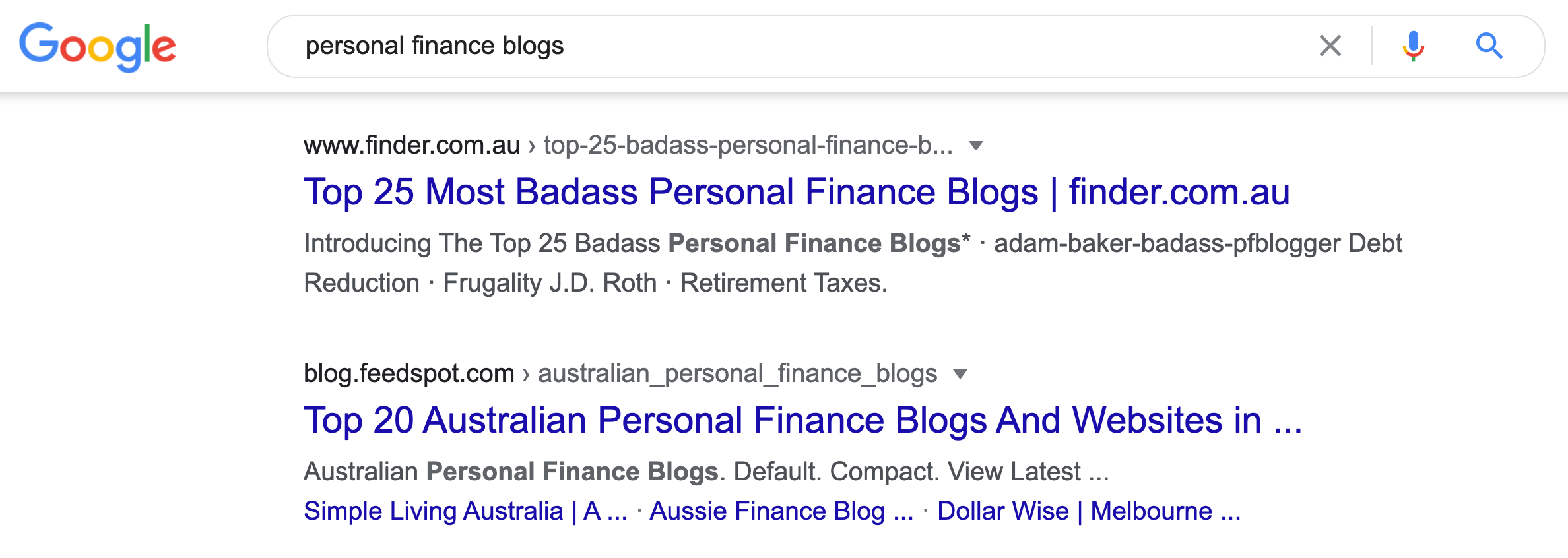
2. Find out who the guy or gal is that "calls the shots" on the site. This will often be the marketing manager at the company. Hit them up on social media using a "money message” like this:

3. Once you get a reply, make your sponsorship pitch:
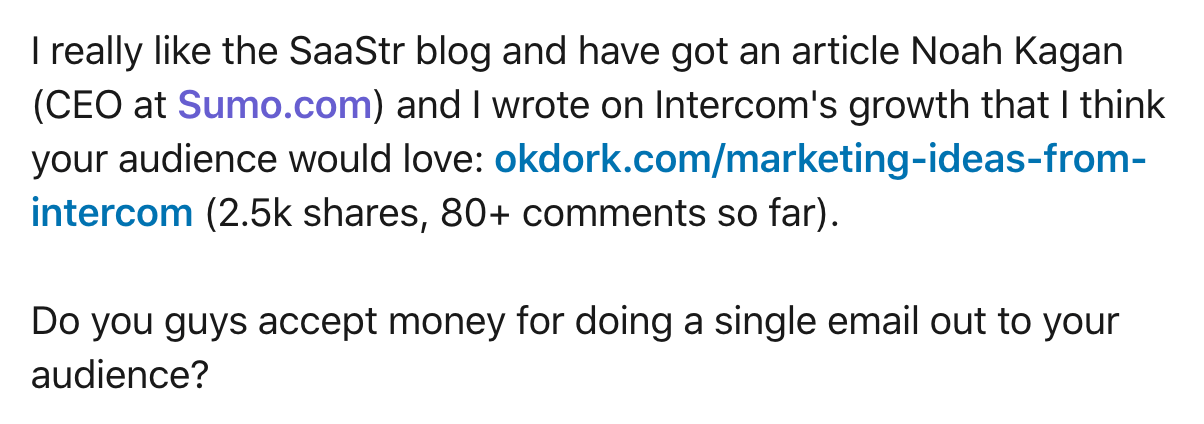
4. If you get a “yes” send over your offer. I recommend paying $1-$2 per email click for your first promotion, and sending people to a piece of actionable content you know converts into sales like this (that their audience will also love).
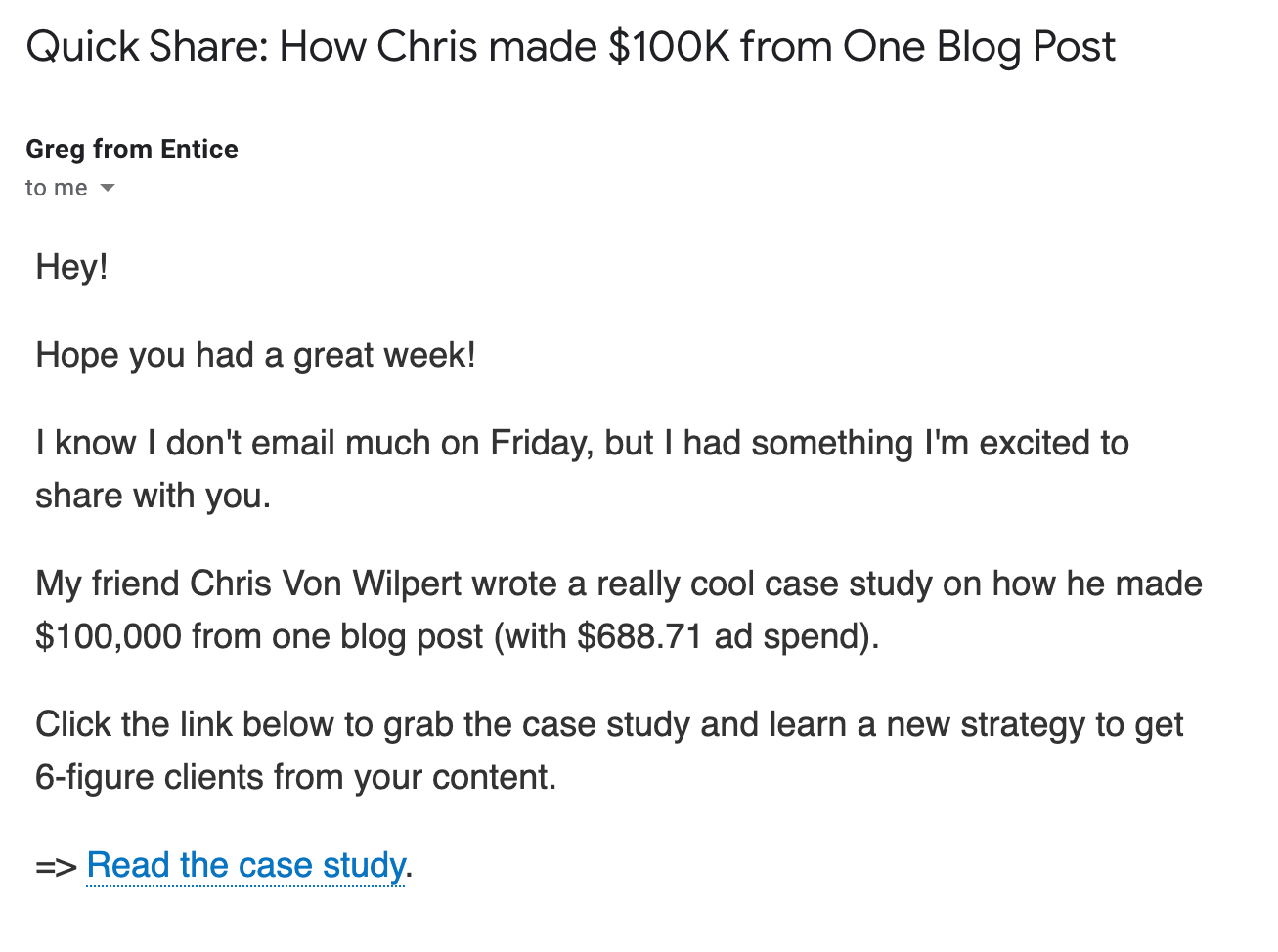
5. If you get a “no,” make a no-brainer offer to promote them to a bigger audience than they can promote you to (if you don’t have a big email list, you can offer to promote them using the traffic strategies on this list).
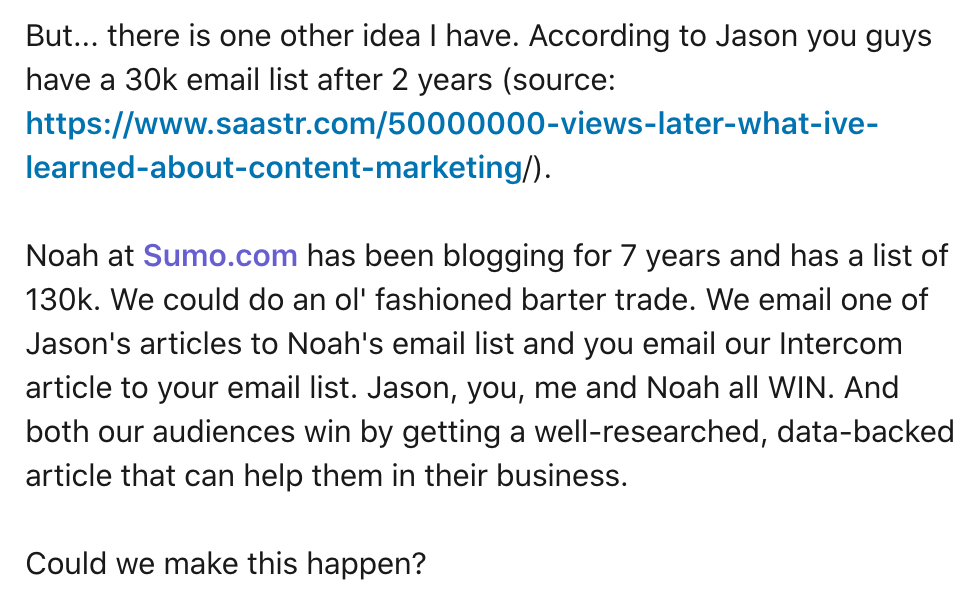
There are blogs out there with big newsletters open to these sponsorship opportunities.
You just need to find them.
Then remember... lead with content (aka value) first.
People are much more likely to accept your offer if you want to send their audience to an actionable blog post that you know converts (not your sales page).
If you don’t have content that converts, we teach how to do it inside Content Mavericks.10. Link Building: Reverse Engineer Your Biggest Competitors Most Backlinked Page
Platform: SEMrush.
Time: 20 hours per blog post.
What You Do: Find what page gets the most backlinks on your biggest competitors site (aka their best linkable asset), create better content, then run a Google ad to it.
How You Do It:
- Go to SEMrush > Backlink Analytics > Search for your biggest competitors website URL.
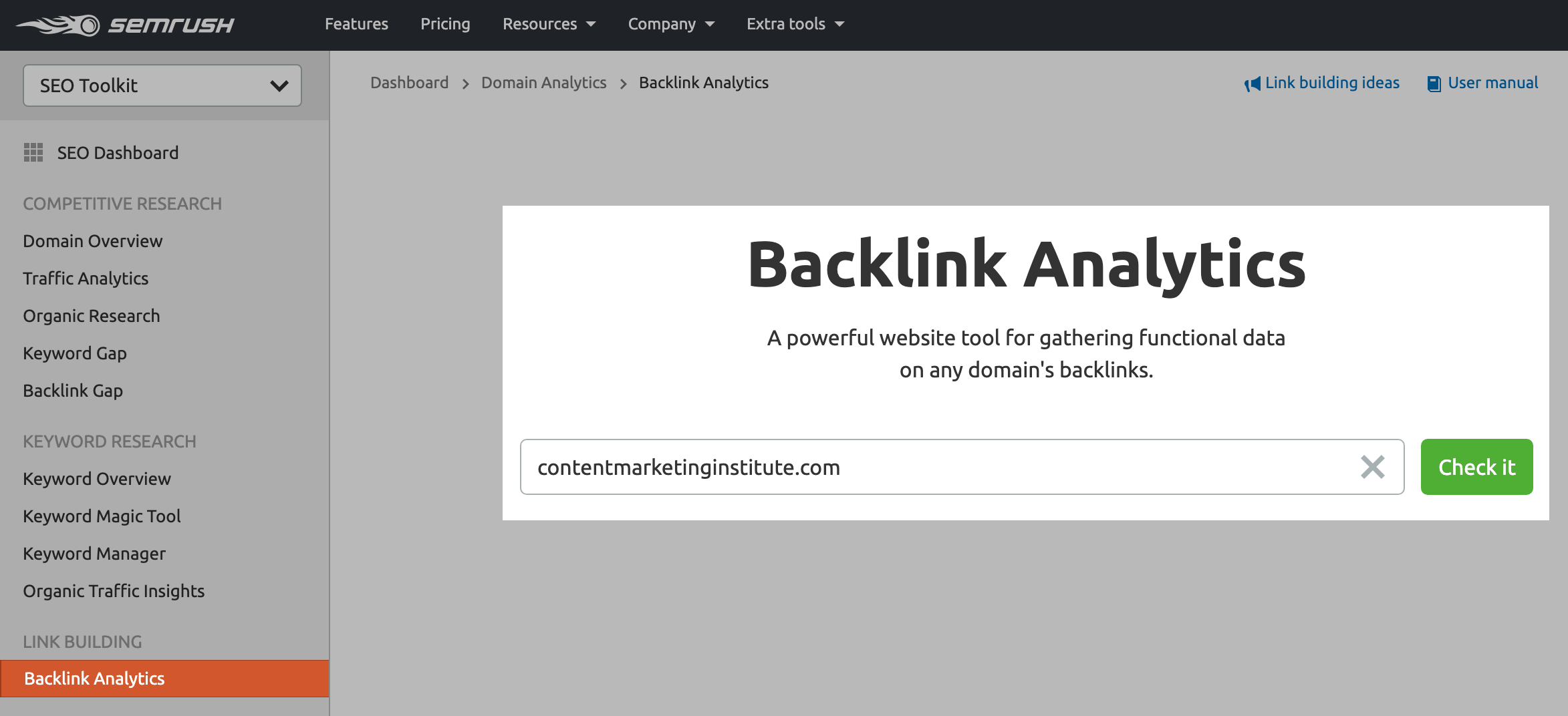
2. Go to the “Indexed Pages” tab.

3. Scroll down to the Indexed Pages section to find what page on the site (other than the homepage) gets the most “Referring Domains” (i.e. links from domains on other websites).
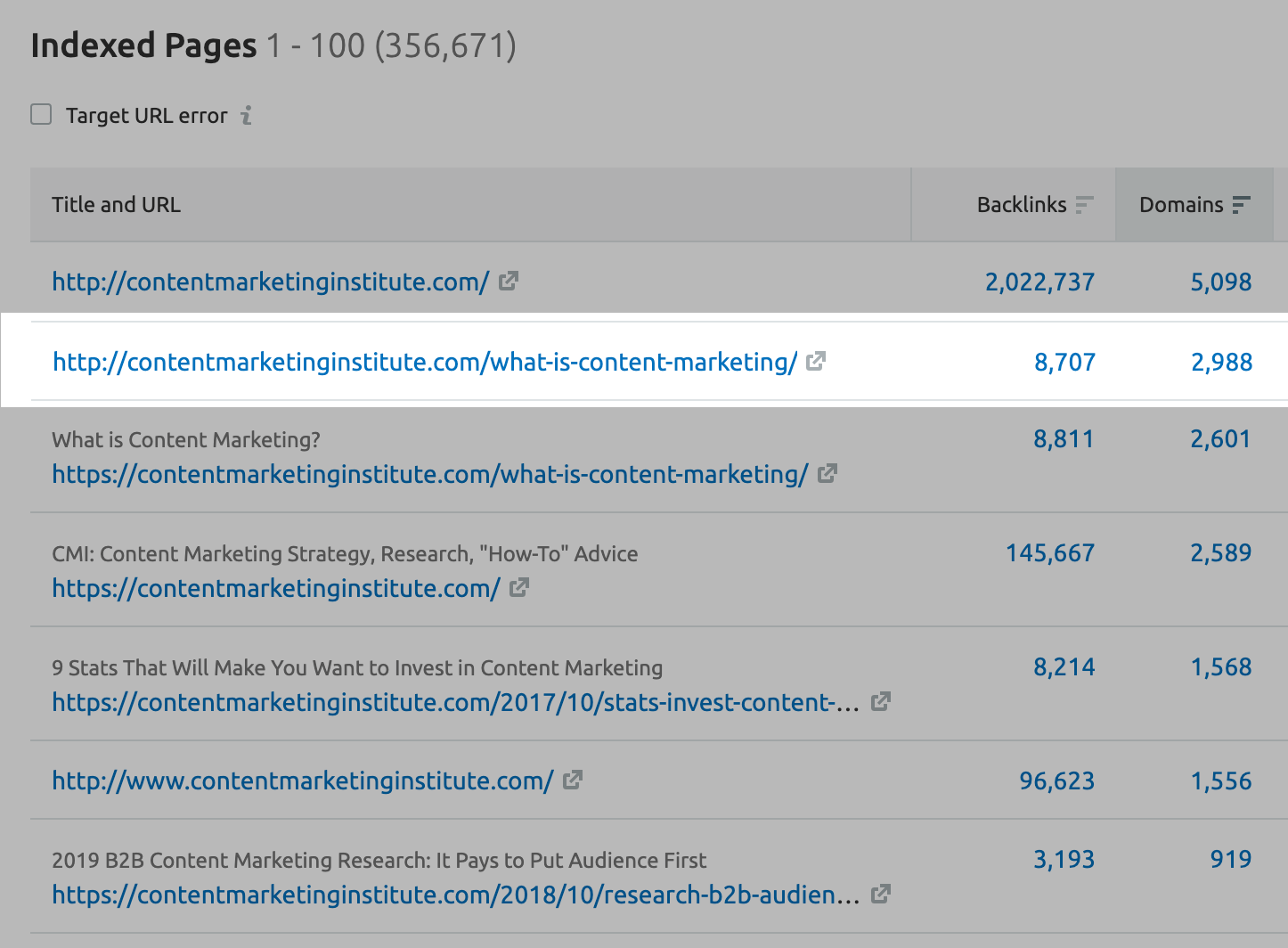
4. Write a blog post that is better than your competitors post. To do it:
- Make sure the title matches the same intent as the other blog post that got the backlinks, as that is the angle proven to get links. (my example)
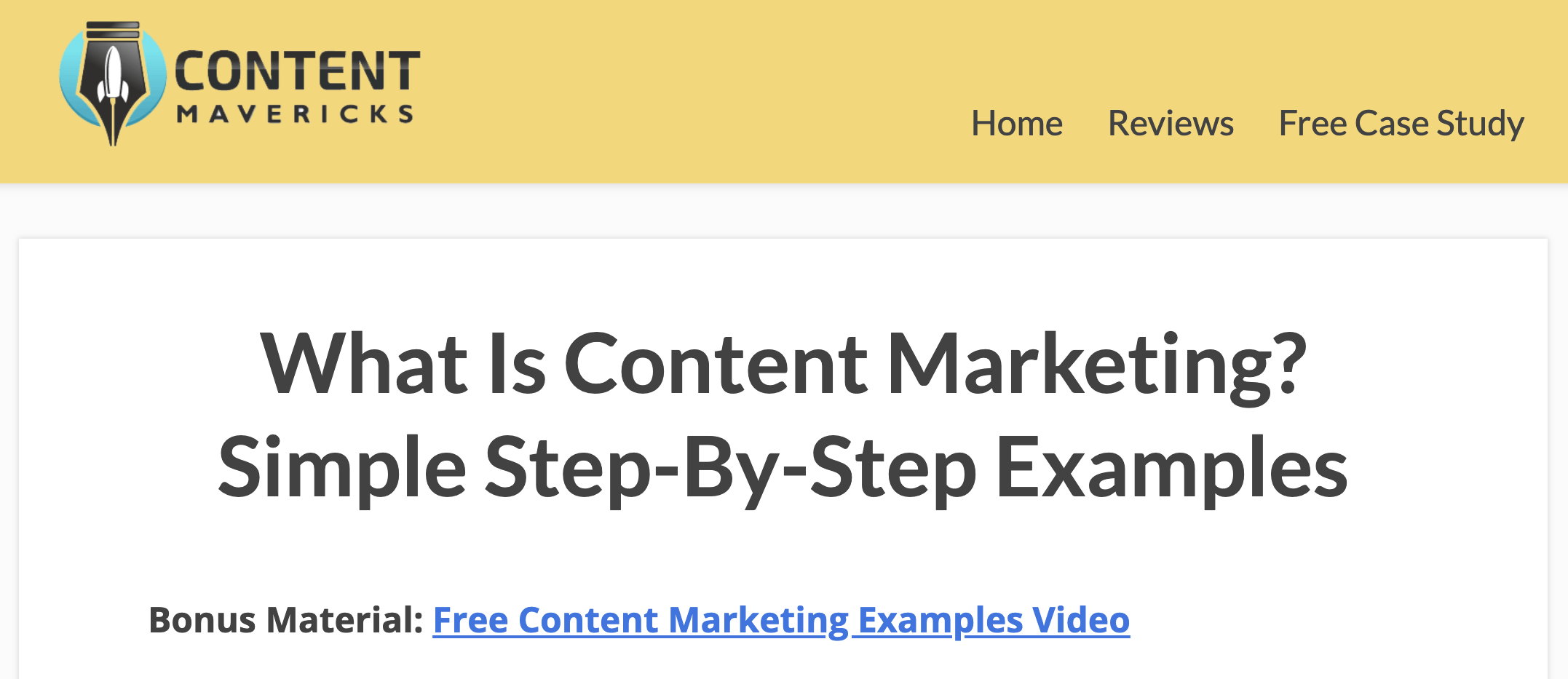
- Give your blog post structure with a table of contents.
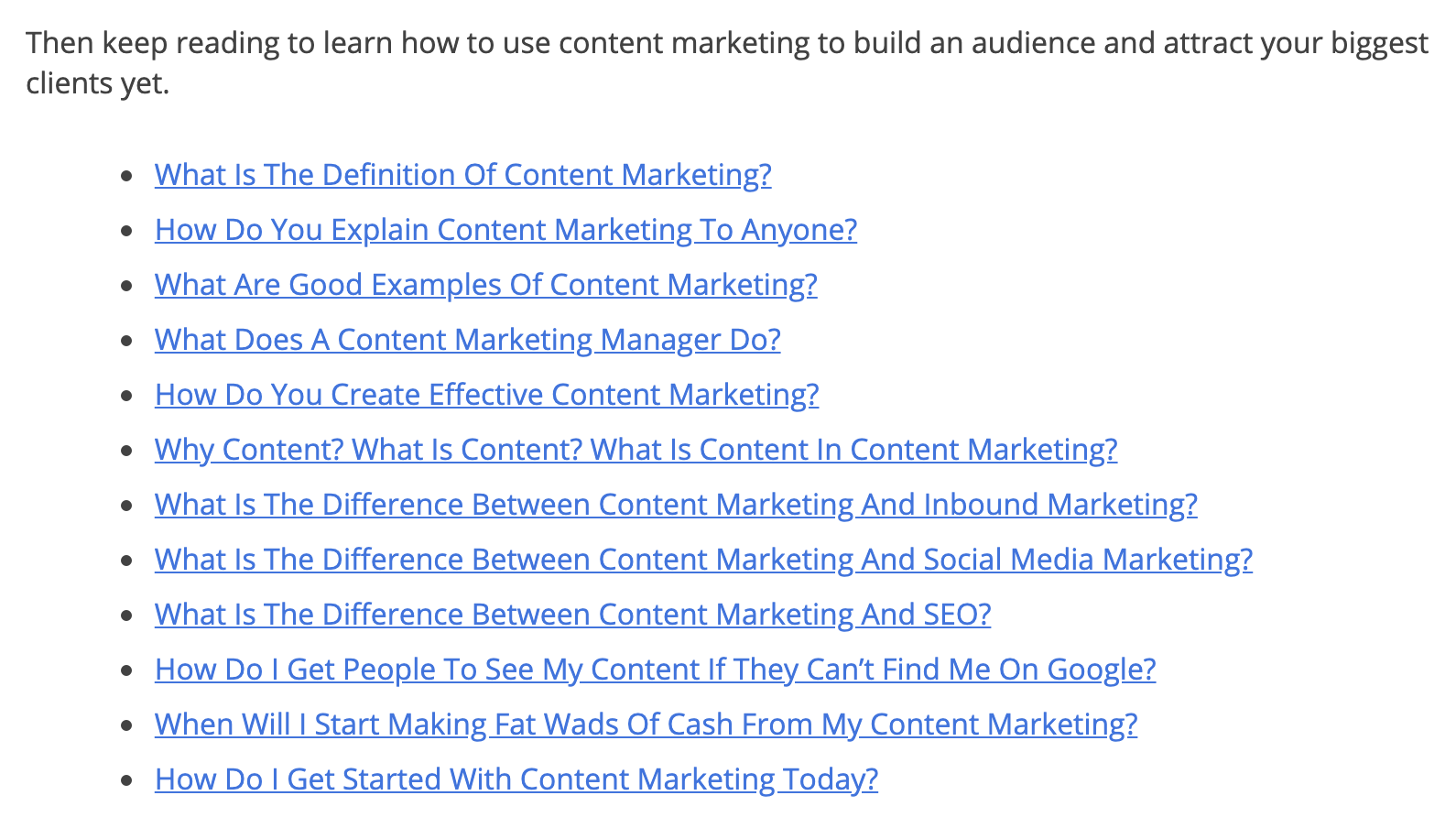
- Use text and images (and video if you have it) to explain your answer clearly.

- Use sub-headings, bullet points, and supporting screenshots to break up your writing and make your content easier to consume.

- Be different. Make your content more entertaining, more actionable, or more in-depth (or ALL three).

5. Run a Google ad to the post so Google searchers find your blog post first and link to you (instead of your competitor).
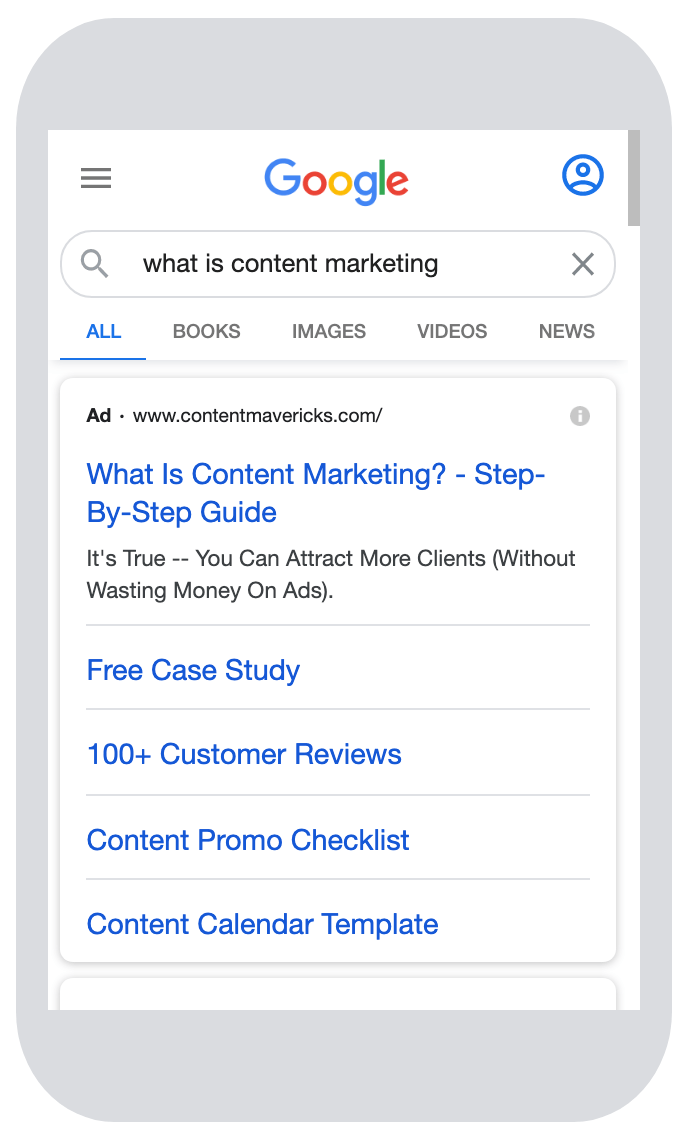
Over time your content will get more backlinks than your competitors.
And traffic to your content will increase site-wide.
Note: SEMrush is a paid tool, but they gave me a 14-day free trial for Content Mavericks readers. Perfect to find your biggest competitors' top linkable asset.
Get My Complete List Of 100 Ways To Increase Your Website Traffic
Did you like these 10 strategies?
If you did, I put together a complete list of all my best free and paid traffic strategies.
Simply click the button below to get the full list with:
- The name of the strategy.
- Step-by-step instructions.
- Links to examples you can model.
Then let me know in the comments:
What strategy are you going to try first to increase your website traffic?
Answering Quora questions ranking 1-10 on Google, getting micro-influencers to promote your content on Quuu Promote, or something else?


